Mark Douglas-Home’s The Woman Who Walked Into the Sea, his second Cal McGill mystery, is just as good as its predecessor, the wonderful The Sea Detective. In this follow-up, McGill, a marine researcher working in the Scottish Highlands, is asked by Violet Wells to find the body of the mother who gave her away at birth, then drowned herself. Cal discovers that Violet’s mother didn’t commit suicide; she was murdered. As in The Sea Detective, we learn a lot about the way bodies behave when caught in oceanic currents, but what keeps all the science from becoming too dry is author Douglas-Home’s understanding of psychology. Perhaps the most interesting of his creations is vengeance-driven Mary Anderson, once a trusted servant at the big house of Brae, now cast aside like an old dustcloth. As in real life, no character is one hundred percent good or one hundred percent evil. And that dichotomy goes for towns, too. Violet, McGill’s client, is the unmarried mother of Anna, a mixed-race child, and so is frequently the target of racism by the inhabitants of Poltown, a scenic Highlands village. As in many mysteries, the book’s setting becomes a character. Poltown’s very beauty causes fisticuffs between inhabitants who want it left unspoiled and those who, for financial reasons, prefer it be developed. A pall of grief overlays this extraordinary novel, grief not only for the murdered woman, but also for an unspoiled coastline in danger of vanishing in order to advance “progress.” So deft is the author’s handling of the emotional and ecological issues that anyone reading his book might find himself sympathizing, in turn, with each side. And even, perhaps, with a murderer.

One of the unique things about being a fan of mystery fiction is that there are many regional conferences across the country. This allows readers to meet their favorite authors without having to travel too far.
So if you are anywhere near Indianapolis this weekend, sign up for Magna cum Murder Crime Writing Festival. The conference also is worth a last-minute plane ticket.
Magna cum Murder XIX will be Oct. 25-27 in downtown Indianapolis at the historic Columbia Circle on Monument Circle.
More than 30 published authors will be on hand for panels, discussions and even some dining events.
Guest of honor is Steve Hamilton, left, who has won myriad awards beginning with his first novel A Cold Day in Paradise, which won the Edgar Award, sponsored by the Mystery Writers of America and the Shamus Award, sponsored by the Private Eye Writers of America. That novel also was nominated for an Anthony and a Barry award. Hamilton again won the Edgar in 2011 for his novel The Lock Artist.

The banquet speaker is Hank Phillippi Ryan, right, whose first novel Prime Time, won the Agatha Award for best new mystery of 2007. She also has been nominated for numerous other awards. Her 2012 novel The Other Woman was chosen as a Best Book of 2012 by Suspense Magazine, and an RTBR Reviewers Choice nominee for Best Mystery/Suspense novel of 2012 and won the Mary Higgins Clark Award. As a journalist, Ryan has won 28 Emmy Awards and 12 Edward R. Murrow Awards for her investigative and consumer reporting. Her latest novel is The Wrong Girl.
Both Hamilton and Ryan are terrific writers and speakers.
Other authors present include Dorothy Cannell, Jerry Healy, Sandra Balzo, Jeanne Dams, Maureen Jennings,Terence Faherty, Sara Hoskinson Frommer, John Gilstrap, Parnell Hall, Ellen Hart, William Kent Krueger, among others.
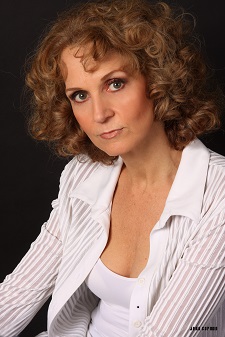
Carla Norton’s first foray into fiction, The Edge of Normal, is an enthralling novel about a young woman rebuilding her life after being held captive for years. But there is more than a ripped from the headlines pastiche as Norton delivers an emotional story of a woman fighting to regain her sense of self, to reach, at least, an edge of normal.
In telling the story of Reeve LeClaire, who was kidnaped when she was 12 and held for four years, the author shows a heartfelt view of victims who, even after they have been rescued, become subjects to be exploited by psychologists and lawyers on documentaries and news shows.
During a recent interview, Norton gave us some insight about The Edge of Normal and the story behind her novel.
Q: Did the discovery of Gina DeJesus, Michelle Knight and Amanda Berry rescued years after they disappeared influence you?
A: My novel was already complete when that case hit the news, but the story certainly made my blood boil. I almost immediately sat down to write a hotheaded essay titled, “How can the Punishment fit the Crime?”
Q: How did you come up with the rituals and routines that Reeve has devised as part of her recovery?
A: In writing fiction, you inhabit your characters, and I confess that her quirks are partly mine. A lot of her defensiveness and her neuroses are just exaggerations of my inner self. Also, I have a scar at the back of my neck, and I have a problem with numbness in my left hand, so Reeve inherited those from me.
Q: This must be a new field. Did you encounter any resistance when researching the subject?
A: People have been generous about sharing information. I’m encountering more resistance in researching the sequel than I did in researching The Edge of Normal, but I can’t go into that.
And this field isn’t really new. It goes all the way back to the ancient myth of Persephone, who was abducted by Hades and taken to the Underworld.
Q: What myths do you hope The Edge of Normal might dispel about prolonged captivity?
A: I had no agenda other than to present a compelling story. But my heroine is rooted in reality, and in one scene she gets angry about the misconception that captives fall in love with their captors.
Q: You've written about this subject before in your nonfiction Perfect Victim: The True Story of the Girl in the Box. Are the myths about prolonged captivity being dispelled?
A: Patty Hearst once said, “When you are held captive, people somehow expect you to spit in your captor’s face and get killed.” That’s less true today. I think public understanding of Stockholm syndrome has evolved. But you’ll recall that Patty Hearst didn’t meet with much public sympathy. Neither did Colleen Stan [Perfect Victim], who was held in a horrific situation for seven years. People didn’t understand why victims didn’t escape at the first opportunity. But perceptions started to shift with Elizabeth Smart’s rescue, partly because she was a child when she was taken, and partly because the media began to take a closer look at captivity syndromes.
Q: Where did we get the term “Stockholm syndrome?”
A: A Stockholm bank robbery in 1973 led a Swedish criminologist to coin that phrase. Hostages were taken and held five days—that’s all—but began to exhibit unexpected sympathy toward their captors. You can see the same psychological effects in many types of captive situations. POWs and hostages exhibit similar symptoms. It’s a survival mechanism. The opposite, I learned recently, is called “London syndrome,” based on a case in which hostages fought back and were killed.
Q: What is the biggest obstacle in the recovery of these victims?
A: I’m not a psychologist, and each individual faces unique problems, but it depends largely on the duration and severity of their ordeal. Having a supportive family is a huge factor in being able to feel safe and in control again. It’s a long road of both physical and mental healing. Just imagine going without any medical or dental care while being abused and tortured and starved. These victims can also suffer long-term effects from being deprived basic things like vitamins and sunshine. It makes me furious to think about it.
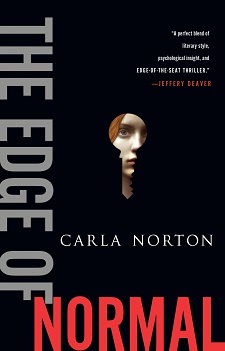
Q: As much as she tries, Reeve isn’t quite back to normal, is she?
A: She never will be, but that is her strength. She has endured so much that she has an underlying toughness. She’s damaged but uniquely courageous, perhaps a bit like Lisbeth Salander. Because I wasn’t interested in a protagonist whose strength comes from training, or who is duty-bound to fight crime. Reeve isn’t a cop or a spy. She’s driven by her inner demons.
Q: You vividly show how the victims’ ordeals never seem to end but are rehashed by lawyers, the media and pop psychologists; why did you want to portray this kind of intrusion?
A: Every time one of these cases hits the news, I sit there tearing out my hair because of the inane coverage. I’m one of those crazy people who argues with the television.
Q: Is Reeve’s psychiatrist, the compassionate Ezra Lerner, based on anyone?
A: He’s roughly based on Dr. Chris Hatcher, who testified as an expert witness in Cameron Hooker’s trial, along with a mix of other doctors I’ve known, very compassionate, brilliant men. There’s also a bit of Jonathan Kellerman’s Dr. Alex Delaware, plus a touch of the child psychologist portrayed by Bruce Willis in The Sixth Sense.
Q: Why was Perfect Victim put on the reading list for the FBI’s Behavioral Sciences Unit?
A: That came as a complete surprise to me. I should probably credit the prosecutor, my coauthor, Christine McGuire, who spoke to the FBI. This was a textbook case of Stockholm syndrome, and the whole trial hinged on volition, on the idea that the victim’s psychological chains prevented her escape.
Q: In your research about prolonged captivity, what was the most horrifying thing you learned?
A: The captors are such twisted human beings. Kidnapping and holding a person captive is an extremely taxing endeavor. Who chooses to dedicate their lives to that? It’s ghastly.
Q: Are you still in touch with Colleen Stan, the woman who endured the events recounted in Perfect Victim?
A: Yes, I’m happy to have Colleen as a friend. She has been working on a memoir, which I hope she’ll get published. She’s had an extraordinary life and she’s an amazingly resilient person. So let’s be clear that she’s now a survivor, not a victim.
Q: Why is the book titled Perfect Victim. What made her perfect?
A: If Colleen had not behaved perfectly, there’s no question in my mind that she would have been killed. The title refers to a young, trusting woman, hitchhiking alone. For a kidnapper, that’s a perfect situation. (True confession: I hitchhiked that same stretch of freeway when I was about her age. Very stupid of me, I know.)
Q: Was The Edge of Normal a difficult novel to tackle?
A: Yes, in some ways, because I needed to convey what Reeve had endured, without sensationalizing it or making it too graphic. You want to suggest the months and years of being locked up, the terrible abuse, without making the reader suffer for years in a basement.
Q: Who do you read?
A: Many wonderful writers. Right now I’m reading John Lescroart. Other favorites are Laura Lippman, Robert Crais, Jeffery Deaver, Jo Nesbo, Steig Larsson, Patricia Highsmith, and Lee Child. And in other genres, Barbara Kingsolver, David Benioff, Karen Engelmann, Suzanne Collins … the list goes on and on, and I’ve barely scratched the surface.
Q: Is there one book, fiction or nonfiction, that inspired you?
A: The Silence of the Lambs stands out. It’s a brilliant thriller, not only because of the plot, but because of the characters and the prose. I’m indebted to Thomas Harris for creating Clarice Starling, who was whispering in my ear whenever Reeve faced danger.
But there are other novels that deserve kudos, too.
Q: Which other novels?
A: The Collector, by John Fowles, because he so vividly portrayed the psychology of both sides of the captive equation in 1963, even before the term “Stockholm syndrome” was coined. In some ways, Room, by Emma Donoghue is a pioneering book, and so is Misery, by Stephen King, which was published in 1988.
Q: You worked as a journalist for years; how did journalism affect your career as an author?
A: I’m a terrible hoarder of information. There’s a journalistic axiom that, when you start hearing the same things over and over, you know your research is done. And there’s another saying that, just because you know something, your reader doesn’t have to. In other words, don’t cram every item into your story just to show off how hard you’ve worked. Each fact must serve the story.
And that’s true in both fiction and nonfiction. You don’t want to weigh down the story with a lot of exposition.
Q: What are some of the things you researched that didn’t fit into this book?
A: I did a comparison of three particular cases, Colleen Stan, Elizabeth Smart, and Jaycee Dugard, who were each kidnapped by a husband and wife team. That’s a pretty unusual dynamic, and I think there are many interesting parallels in the types of coercion employed. But for my novel, I was more interested in a lone wolf type predator.
Q: What’s the biggest difference in writing crime fiction vs. writing true crime?
A: In fiction, the villains can get what they deserve without legal representation and without due process. The punishment can exactly fit the crime.
Q: How does this inspire your fiction?
A: Reeve, my protagonist, has done similar research, reading all kinds of academic journals, trying to get a grasp on what happened to her.

Halloween has never been my favorite holiday. Even as a child, I wasn’t that interested in dressing up in a costume.
But Halloween does bring with it myriad compelling mysteries that will scare you but won’t allow you to stop reading.
Here are some authors and mysteries that are a real treat. And you don’t have to wear a costume while reading.
Charlaine Harris and her Sookie Stackhouse series are always in style. Just in time for Halloween is After Dead!, an illustrated book with an alphabetical listing of all the characters in the Sookie Stackhouse novels, relating what happened to them after the end of the last book. It was originally intended as a thank-you to readers, but it warranted a general distribution. It has been called “mind-blowing, jaw-dropping, laugh-out-loud revelations.” After Dead! offers the ultimate conclusion to the Sookie Stackhouse saga, featuring highlights (and lowlights) from the futures of almost 150 characters. Harris has called After Dead! “my coda to the books that have dominated my professional life for over a decade.”
Harris also has co-edited a series of short story collections, such as Crimes by Moonlight, which contains, among others Dana Cameron’s award-winning “Swing Shift.”
And if you want to have something spooky playing in the background, there is always the HBO series True Blood based on Harris’ Sookie series.
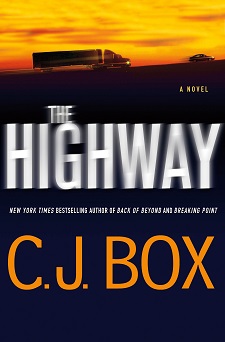
C.J. Box’s The Highway. No vampires, werewolves or zombies are in Box’s standalone novel. But The Highway was the summer’s most terrifying novel. Box based his story on the real hunt for a murderer working as a long-haul trucker —the FBI’s Highway Serial Killer Task Force. While the FBI’s task force statistics are numbing, Box never stoops to the prurient while delivering an edgy, compelling novel.
John Connolly and his Charlie Parker series. This Irish writer whose novels are set in Maine delivers some of the most hard-boiled—and elegantly written—novels about Charlie Parker, a former cop who is haunted by the unsolved murders of his wife and daughter. Start with Every Dead Thing and work your way through his 11 novels. Connolly never lets the supernatural elements overwhelm his story and makes the appearances of Parker’s family believable.
John Searles’ Help for the Haunted: One of the best-reviewed novels of the past month, Help for the Haunted is a ghost story and a coming-of-age tale. Sylvie Mason tries to uncover the secrets behind her ghost-chasing parents’ deaths one cold winter night, and finds truths and mysteries that run much deeper.
Joe Hill’s NOS4A2: Charlie Manx kidnaps children in his Rolls-Royce with the vanity license plate NOS4A2 and takes them to a place he calls “Christmasland,” where every day is Christmas morning, and you never grow up and you never die. But you are turned into something absolutely terrifying. Victoria McQueen is the only child to ever escape Charlie. Now an adult, she must fight to protect Charlie’s latest target—her son, Wayne.
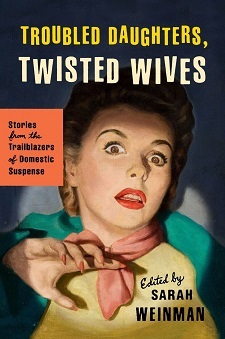
Roseanne Montillo’s The Lady and her Monsters: A Tale of Dissections, Real-Life Dr. Frankensteins, and the Creation of Mary Shelley's Masterpiece. In this nonfiction book, Montillo traces Mary Shelley's life story and the writing of Frankenstein and uses the novel to explore the dark world of early nineteenth-century science.
Penguin Classics has released six titles in its new Penguin Horror series, edited and introduced by filmmaker Guillermo del Toro: The Haunting of Hill House by Shirley Jackson; The Thing on the Doorstep and Other Weird Stories by H.P. Lovecraft; The Raven: Tales and Poems by Edgar Allan Poe; Haunted Castles: The Complete Gothic Stories by Ray Russell; American Supernatural Tales, edited by S.T. Joshi, and, Frankenstein by Mary Shelley.
And since scary is in the eye of the beholder, try Troubled Daughters, Twisted Wives: Stories From the Trailblazers of Domestic Suspense, edited by Sarah Weinman. Sarah Weinman’s meticulous research and thoughtful approach illustrates why these 14 women writers highlighted in Troubled Daughters, Twisted Wives are important to crime fiction. These women’s writings “blur between categories, and give readers a glimpse of the darkest impulses that pervade every part of contemporary society,” writes Weinman in her introduction.
 May I call you Ruth?
May I call you Ruth?
In 1986 I hadn’t written a word of fiction. I had read much fiction and, as a feature writer and arts reporter for a newspaper, I had interviewed many authors. With very few exceptions, they were gracious and forthcoming—easy interviews, though I remember now almost nothing of the content of the conversation, of the book, or even of the place we met.
But in May of that year, in the Velvet Glove restaurant of the Winnipeg Inn, I met Ruth Rendell. She was with her husband, Don. She was impeccably dressed and coiffed. It was lunchtime. She ate smoked goldeye, a local delicacy. (See how I remember these details?) Don was warm and friendly. His wife was cool and regal—une femme formidable, as Hercule Poirot might say. In those days, in the spring and fall publishing seasons, authors poured through town on publicity tours. It was impossible to read every single book in advance of meeting their authors. Sometimes I worked off the bumpf sent with the book by the publisher and prayed I didn’t sound like a complete clot. I think I managed to fool most of them. (Or perhaps they were too polite to say. Most of these writers were Canadian, which I think explains it.)
One look in Ms. Rendell’s dark assessing eyes, however, and I realized I wouldn’t be pulling any wool over those babies. Thank God I had read every book she had ever had published.
Her writing was a revelation. As a teenager in the 1960s, I read avidly most of the Golden Age detective novelists, Agatha Christie et al., but somehow I had not found my way into contemporary crime fiction with its richer exploration of character, setting, and psychological realism. But in the ’70s I stumbled across Ruth Rendell’s Inspector Wexford series. They honed to the conventions of the genre that I loved, but they seemed more daring, more chilling, more complex. I was intrigued. But it was her standalone novels that hooked me, providing me the glimmer of the idea that a genre novel could be infiltrated and filled with ideas and acute social observation—that a genre novel could meet and match all the expectations of a good literary novel. Her 1977 novel A Judgement in Stone is a brilliant rendering of a crime founded on the shame of illiteracy and the class structure that made it possible. Its first sentence, which reveals both murderer and victim—what we would call a “spoiler” in films—is a bold gambit, but confidently executed. Even armed with whodunit, readers are unlikely to find the tension and menace lapse as they are drawn into the how and why. Through her 1984 novel The Tree of Hands (possibly my favorite), I think I held my breath as the characters caught in the chaos of mental illness and child abuse spiralled doomward. The name of the mad mother—Mopsa—stays with me still.
 In 1986, Ruth (may I call you Ruth?) was in Canada previewing a Toronto-produced film based on A Judgement in Stone and talking about her then new novels, Live Flesh and A Dark-Adapted Eye, the latter the first of her books written under the pseudonym Barbara Vine, in which characterization is even richer, if that’s possible. (And it is!) Over lunch, conversation turned to the pseudo-royal moniker foisted on her by the marketing arm of her publishers—“the Queen of Crime,” the latest in succession from Christie, Sayers, Allingham, and Marsh. She loathed its sexist implication (people surprised not that a woman writes crime well, but that she write it at all) and its lumping her in with what she called the “cozy club” (a subgenre in which I, too, find myself uncomfortably positioned). I remember her specifically singling out for her disapproval crime novels featuring “absentminded country vicars.”
In 1986, Ruth (may I call you Ruth?) was in Canada previewing a Toronto-produced film based on A Judgement in Stone and talking about her then new novels, Live Flesh and A Dark-Adapted Eye, the latter the first of her books written under the pseudonym Barbara Vine, in which characterization is even richer, if that’s possible. (And it is!) Over lunch, conversation turned to the pseudo-royal moniker foisted on her by the marketing arm of her publishers—“the Queen of Crime,” the latest in succession from Christie, Sayers, Allingham, and Marsh. She loathed its sexist implication (people surprised not that a woman writes crime well, but that she write it at all) and its lumping her in with what she called the “cozy club” (a subgenre in which I, too, find myself uncomfortably positioned). I remember her specifically singling out for her disapproval crime novels featuring “absentminded country vicars.”
Oh dear, I can only think now. My protagonist in the Father Christmas mysteries is a country vicar.
Sorry, Ruth.
At least mine’s not at all absentminded.
C. C. Benison is the nom de plume for Arthur Ellis Award–winning author Doug Whiteway. He is the author of seven crime novels, the latest of which is Ten Lords A-Leaping.
This "Writers on Reading" essay was originally published in "At the Scene" eNews November 2013 as a first-look exclusive to our enewsletter subscribers. For more special content available first to our enewsletter subscribers, sign up here.
 It all began with a librarian with "thrillingly diverse tastes."
It all began with a librarian with "thrillingly diverse tastes."
I spent so much time in my local library as a child, it’s a wonder my mother didn’t serve my dinners in there. I grew up in Greenwich, South London, and loved Dickens, Forster, Waugh, Du Maurier, Wodehouse, Firbank, and Faulkner. Throughout my childhood I borrowed five books every two weeks. You know you’re comfortable in a public place when they let you walk about in your socks.
It was a small library with a good librarian, a woman of thrillingly diverse tastes. She scared me with a laser stare intended to weed out time-wasters. "You’ll need a reference from a friend," she said.
"I haven’t got any friends," I replied.
She peered over half-moon glasses and pursed duck-lips at me. "Hm." Looking around the library, she pointed out a pair of old ladies perusing romantic novels. "Go over there and make a friend." Greenwich council should have given her a gold medal. Instead, they plotted to have the place torn down and sold off behind her back.
I imagined the library becoming emptier and emptier, as this gentle, thoughtful lady remained seated at her counter with a look of doomed hopefulness on her face. A custodian of treasures with the power to improve more young lives than any politician, I saw her facing the forces of ill-informed darkness with a rallying cry like that of Boadicea, if Boadicea had been a suburban librarian rather than the Queen of the Iceni.
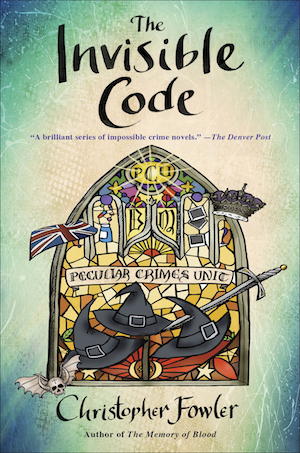 I started writing partly because my mother said, "Write a good book and it will remain in the library long after you’re dead." If any of you have read my memoir Paperboy you’ll know it was typical of her to say "after you’re dead" to a nine year-old.
I started writing partly because my mother said, "Write a good book and it will remain in the library long after you’re dead." If any of you have read my memoir Paperboy you’ll know it was typical of her to say "after you’re dead" to a nine year-old.
Thrillers were not stocked at Greenwich Library. I discovered a fantastically seedy second-hand bookstore called the Popular Book Centre, presided over by a gimlet-eyed man with the complexion of a sweating haddock, who looked like he had been cast to play a lecherous plumber in a porn movie. He made enough money from thrusting, pointy-breasted top-shelf smut to keep racks of yellowing, dirt-cheap paperbacks going for real readers. In this way, he was as useful as a public library. The great thing about the shop was that I could always find something cheap and wonderful lurking in the racks. I still live in hope of that feeling.
This "Writers on Reading" essay was originally published in "At the Scene" eNews December 2013 as a first-look exclusive to our enewsletter subscribers. For more special content available first to our enewsletter subscribers, sign up here.

The United States and Canada don’t have a lock on mystery fiction conferences. One of the most famous is located in Harrogate, England.
New to the mystery fiction conference scene is Iceland Noir, which launches its first gathering Nov. 21-24 at The Nordic House in downtown Reykjavik.
While Iceland has a rich history of literature, mystery fiction is fairly new to this country. Now Iceland has a handful of highly respected mystery authors who are showcasing their country through gripping crime fiction.
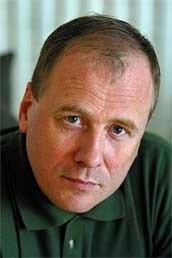
Special guest of honor at Iceland Noir will be Arnaldur Indridason, right, who is Iceland’s best selling crime novelist with his Detective Erlendur crime series. Indridason earned the CWA Gold Dagger in 2005 and twice has taken home the Glass Key Award for the best Nordic crime novel. In 2003, he had five novels on the Icelandic best-sellers list for a week, the only author other than J.K. Rowling to simultaneously hold the top three spots. In 2004, he sold 100,000 copies of his mysteries. That’s the year that his novels were seven of the 10 most popular titles borrowed from the Reykjavík City Library.
Arnaldur (phonetically ARE-nald-UR Ind-RID-a-son) has been credited with the starting a new wave of Icelandic crime fiction, beginning with his 1997 Sons of Earth (Synir duftsins). Arnaldur—it’s the custom to call the Icelandic by their first name—didn’t originate crime fiction in his country, but he did find a way to tap its potential.
I interviewed Arnaldur a few years ago for Mystery Scene (Holiday Issue 2006, No. 97) and we talked at length about Iceland and its novelists.

Here is an excerpt from that interview:
“People used to think that it would be too ridiculous to have crime fiction in Iceland because nothing happened here,” said Arnaldur.
But Iceland has undergone enormous changes during the past 50 years.
“Before World War II, Iceland was a very poor, peasant country with most of its people living in rural areas,” he said. “If there was a murder, it was generally a knife stabbing in a drinking brawl. Crimes were not very well thought out.”
But during the past 20 years, Iceland has leapt into the cyber age with the arrival of international companies. Cities are expanding, edging into rural areas.

“In the past we were an isolated country in the middle of the Atlantic, a peasant country with not much going on in the way of crimes. Now we are in the middle of Europe, so to speak. And in many ways, we are also in the middle of America. We take influences from both sides,” said Arnaldur who, despite high-tech’s impact on his country still uses his computer only as a typewriter and doesn’t have a Web site.
It’s this conflict between old vs. new that Arnaldur explores in his novels. Using the police procedural as a foundation, he weaves the country’s history and legends into stories that explore how contemporary issues affect Icelandic society. Jar City dealt with the Iceland’s database of genetic research. Silence of the Grave includes subplots of American soldiers stationed in Iceland during World War II, domestic violence and urban sprawl. (end of Mystery Scene excerpt)
Since that interview, Iceland has undergone even more changes in its economy and landscape.

Iceland Noir also will feature Yrsa Sigurðardóttir, bestselling Icelandic author of the Thóra mystery series and 2012 Glass Key nominated crime/horror novel I Remember You, which is being turned into a Hollywood film. Quentin Bates, British author of the Iceland-set Officer Gunnhildur crime novels. Michael Ridpath, English, author of the Fire and Ice series of crime novels set in Iceland. Other authors who don’t have a connection with Iceland include Anne Cleeves, William Ryan, Zoe Sharp, Susan Moody and Matt Hilton.
And the list of Icelandic authors continues to grow. One of the newest ones will be Snorri Kristjansson whose epic Viking saga debut Swords of Good Men comes out in January from Jo Fletcher Books/Quercus.
I wish Iceland was on my travel plans this year, but it is not. Iceland Noir sounds like a promising conference. As an aside, my next-door neighbors are from Iceland.
Iceland sounds like a perfect place to launch a new mystery fiction conference. The entire nation has just over 300,000 residents and its literacy level hovers around 96%. My neighbors told me that one of the Christmas traditions is to give books; so I load them up with books when they go to see their daughter in Atlanta during the holidays.

BBC News recently reported that Iceland is “is experiencing a book boom," with "more writers, more books published and more books read, per head, than anywhere else in the world," BBC News reported, noting that one in 10 Icelanders will publish one. There is even an Icelandic phrase, “ad ganga med bok I maganum,” which means “everyone gives birth to a book” or, literally, everyone “has a book in their stomach.”
In that BBC News interview, Agla Magnusdottir, head of the new Icelandic Literature Centre, said that authors “write everything--modern sagas, poetry, children's books, literary and erotic fiction--but the biggest boom is in crime writing.”
BBC News also quoted novelist Solvi Bjorn Siggurdsson: “We are a nation of storytellers. When it was dark and cold we had nothing else to do. Thanks to the poetic eddas and medieval sagas, we have always been surrounded by stories. After independence from Denmark in 1944, literature helped define our identity.”
BBC News added: “Iceland's black lava riverbeds, its steaming, bubbling earth, with its towering volcanoes and fairytale streams also make it the perfect setting for stories.
No wonder JRR Tolkien and Seamus Heaney were entranced and Unesco designates Reykjavik a City of Literature.”
It’s not too late to book your air flight and hotel.Photos: Top: Arnaldur Indridason, The Nordic House, the Blue Lagoon, Northern Lights. Stock photos
November is here. The days are getting shorter while your list of To-Dos is getting progressively longer: book the tickets, file the end-of-the-year reports, plan the meals, tests and midterms, scout the sales, do the shopping, send the cards. How is it the holiday season is already upon us?
That's when Thanksgiving arrives. In between cooking dinner, entertaining the kids home from school, and watching football games, it's time to pause, reflect and give thanks.
A few authors have taken the time to do just that with thoughts what they are most thankful for this year. A big "Thanks!" to all those who took the time to share.
 THERESA SCHWEGEL
THERESA SCHWEGEL
This year, I am thankful that both my parents are once again healthy, and that they are able (and thrilled) to care for my daughter while I write. They have always supported me, but this year I wouldn't have finished my novel without them.
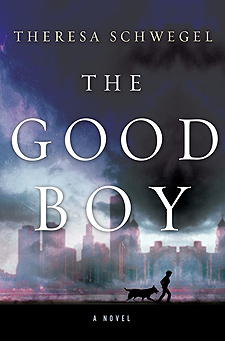 Theresa Schwegel's latest is The Good Boy (Minotaur Books, November 2013). theresaschwegel.com
Theresa Schwegel's latest is The Good Boy (Minotaur Books, November 2013). theresaschwegel.com
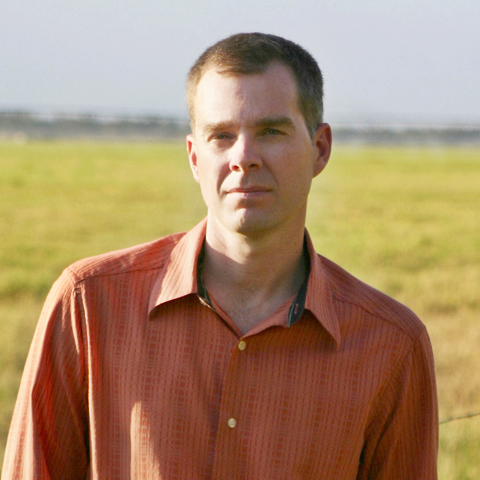 KYLE MILLS
KYLE MILLS
I’ve led a pretty lucky life but this year that luck ran out during a mountain bike race: I lost control and crashed at a speed that I honestly thought would kill me. In the end, I escaped with only a separated collarbone and a bunch of broken ribs but it got me to thinking about all the things in life I take for granted—a wife that after 20 years I still think is amazing, a job I love and that puts a little cash in my pocket to boot, parents who are still healthy and having fun... Sometimes it’s easy to dwell on the little annoyances of life or on what you don’t have, but then something kicks you in the tail and reminds you that none of those things really matter.
 Kyle Mills' latest books are Robert Ludlam's The Utopia Experiment (Grand Central, March 2013), and his own The Immortalists (Thomas & Mercer, December 2011). kylemills.com
Kyle Mills' latest books are Robert Ludlam's The Utopia Experiment (Grand Central, March 2013), and his own The Immortalists (Thomas & Mercer, December 2011). kylemills.com MARGARET MARON
MARGARET MARON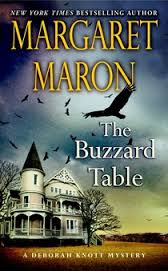 Margaret Maron's new Deborah Knott series book is The Buzzard Table (Grand Central, November 2013). margaretmaron.com
Margaret Maron's new Deborah Knott series book is The Buzzard Table (Grand Central, November 2013). margaretmaron.com
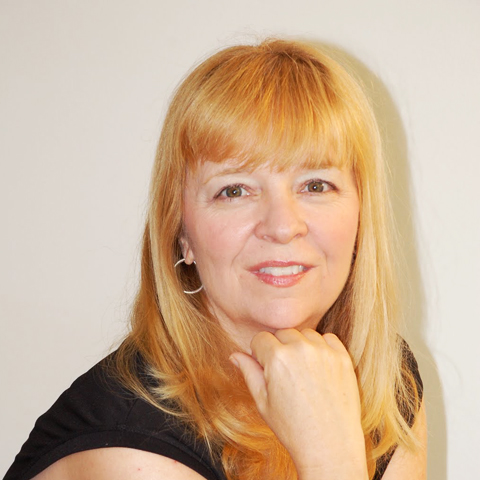 JULIE MOFFETT
JULIE MOFFETT
I have a lot to be thankful for this Thanksgiving. So, it was hard for me to narrow it down, but here is my top-five list.
5. I'm thankful I no longer have to change diapers, but very grateful for my kids, craziness and all.
4. I'm thankful for yoga pants and ponytail scrunchies. Yes, it's awesome working from home.
3. I'm thankful to overhear my six year old tell his friends, "My mommy makes up stuff for a living."
2. I'm VERY thankful for the bouncer at a nightclub who recently said to me, "I'm sorry, you have to be 21 to enter this club."
1. (Drumroll) I'm thankful for my awesome, amazing family, my witty and superlative friends, and the coolest fans on the planet (you know who you are!).
 Julie Moffett's latest Lexi Carmichael mystery is No Place Like Rome (Carine Press, November 2013). juliemoffett.com
Julie Moffett's latest Lexi Carmichael mystery is No Place Like Rome (Carine Press, November 2013). juliemoffett.com
 ELAINE VIETS
ELAINE VIETS
I'm thankful that the St. Louis Post-Dispatch fired me for insubordination after more than 20 years as a columnist and that I started writing mysteries. It was easier to start a career in publishing in the mid-90s. I've been making a killing ever since.
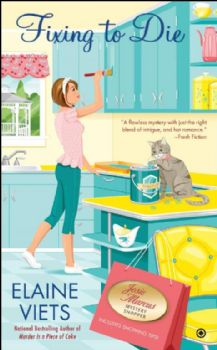 Elaine Viets is the author of Fixing to Die: A Josie Marcus Mystery Shopper mystery. elaineviets.com
Elaine Viets is the author of Fixing to Die: A Josie Marcus Mystery Shopper mystery. elaineviets.com
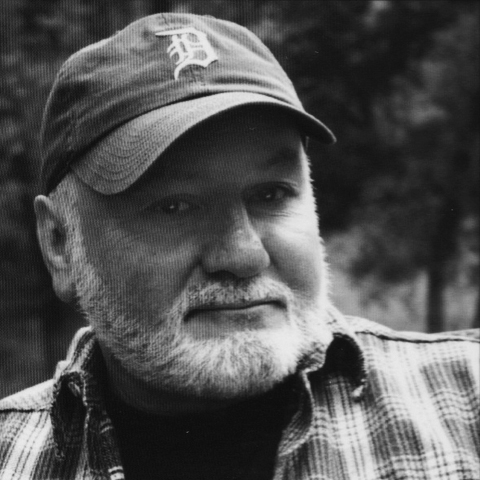 LOREN D. ESTLEMAN
LOREN D. ESTLEMAN
I have a great deal to be thankful for; including the ability to end an independent clause with a preposition, as I just did. After a wife and family whom I love and who love me, I count among them a happy childhood, dogs I've owned (and some cats), good cigars, single-malt Scotch, red wine, well-prepared steaks, cooking, Michigan summers, a comfortable home, books, and the wonder of being able to watch any movie I want anytime I want to, preferably with Debi. Finally, I'm grateful to have been allowed to do something I enjoy and to make a living doing it. In this world of terrorists, climate-change paranoia, and Judd Apatow films, we'd all be happier if we took five minutes each day to count our blessings.
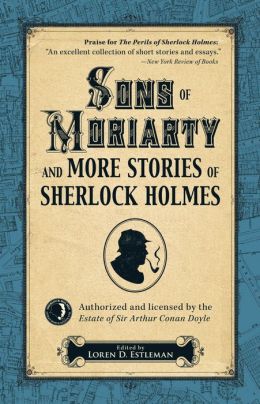 Loren D. Estleman's latest is The Confessions of Al Capone (Forge, June 2013), and The Son's of Moriarty and More Stories of Sherlock Holmes (Tyrus Books, November 2013), which he edited. www.lorenestleman.com
Loren D. Estleman's latest is The Confessions of Al Capone (Forge, June 2013), and The Son's of Moriarty and More Stories of Sherlock Holmes (Tyrus Books, November 2013), which he edited. www.lorenestleman.com
A gift is a gift, but a book is a treasure. And this year sees books on or by three of the greatest mystery writers of all time; books that any true fan would treasure.
 A Mysterious Something in the Light: The Life of Raymond Chandler
A Mysterious Something in the Light: The Life of Raymond Chandler
edited by Tom Williams
Chicago Review Press, September 2013, $29.95
It's been a while since anyone tackled Raymond Chandler—you've got to wonder what's left to find out—in such depth or with such passion, but this full-throttle study by rookie author Tom Williams gets right down to the nitty gritty, digging up all sorts of dirt, from child abuse to alcoholism, and sheds compelling new light on his works. The new standard by which all future biographies will be judged, it will have Chandler disciples fascinated—and non-fans wondering what the fuss is about. For those unfortunates, just give them a drink from the office bottle and hand them a copy of The Big Sleep.
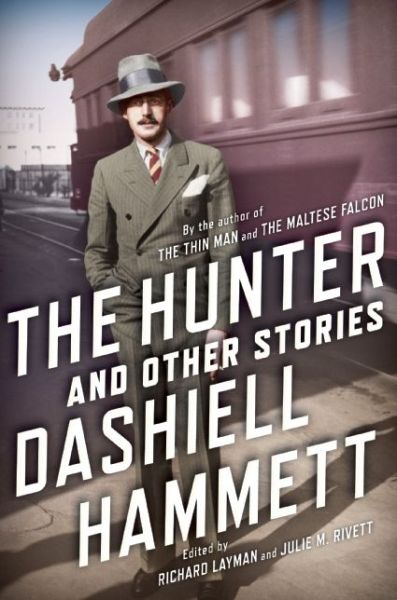 The Hunter and Other Stories
The Hunter and Other Stories
edited by Richard Layman and Julie M. Rivett
Mysterious Press, November 2013, $26.00
Dashiell's Hammett's The Hunter and Other Stories is a other-no-brainer gift for fans of the tough stuff. This volume, put together by Hammett scholar Richard Layman, and Hammett's granddaugher, Julie M. Rivett, a noted expert herself, raids the author's long-sealed personal files for a wealth of rare and unpublished material, including several short stories, three screen treatments and even a snippet of an uncompleted story featuring Sam Spade his own bad self. Not essential Hammett, perhaps, but essential for anyone who gives a damn about American crime fiction. But could we please find another pose of Hammett to use for the cover? That Thin Man schtick is wearing thin, man.
 The Grand Tour: Around the World with the Queen of Mystery
The Grand Tour: Around the World with the Queen of Mystery
by Agatha Christie
William Morrow, September 2014, $19.99
Not that everything is brass knuckles, hard-bitten prose and flinty-eyed cynicism, of course. In the real world, there is still beauty, class and elegance, and Agatha Christie's The Grand Tour: Around the World with the Queen of Mystery definitely focusses on the more genteel side of life; a time when young British married couples of a certain class, such as Christie and new hubby Archie, could park their infant daughter with a sister and take off on an almost-year-long jaunt to South Africa, Australia, New Zealand, Hawaii and Canada. Loaded with snapshots, as well as transcripts and reproductions of Christie's personal letters (mostly to her mother), it's a fascinating peek at a spirited new wife, mother and writer slowly coming into her own. Plus, any book featuring a photo of the future Grande Dame hanging with the beach boys and surfing in Hawaii just has to be seen. It came out too late to make last year's guide, but its recent release in softcover means there's really no excuse not to treat the Christie fan. Cowabunga, dudes...
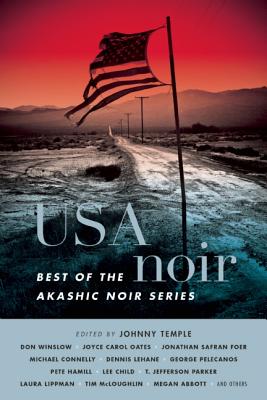 USA Noir
USA Noir
edited by Johnny Temple
Akashic, November 2013, $29.95
For those who'd rather not worry about steamer trunks, porters and passports, and would prefer to keep their crime closer to home Akashic founder and editor Johnny Temple has just the ticket: USA Noir, a veritable greatest hits of the long-running, acclaimed noir series, rounding up solid gold blackness of the bleakest and darkest kind from the likes of Joyce Carol Oates, Don Winslow, Michael Connelly, Lee Child, Ken Bruen, Megan Abbott, Reed Farrell Coleman, Laura Lippman, Lawrence Block, George Pelecanos, Dennis Lehane and others, full of good ol' violence, deception, corruption, greed and murder. Like Chuck Berry sang, "Anything you want, we got right here in the USA."
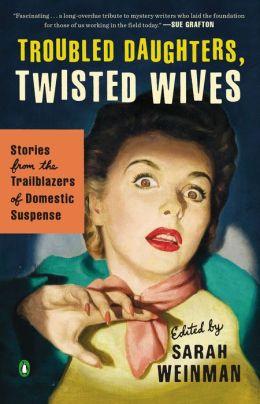 Troubled Daughters, Twisted Wives
Troubled Daughters, Twisted Wives
edited by Sarah Weinman
Penguin, August 2013, $26.00
For homebodies and other homicidal agoraphobiacs who REALLY want to keep their crime close without leaving the house, you can't really go wrong with Troubled Daughters, Twisted Wives, an eye-opening collection of homebound classic and ought-to-be classic stories from the domestic side of hardboiled and noir, stretching from the '40s through the '70s, with contributions from such acclaimed women authors as Helen Nielsen, Patricia Highsmith, Margaret Millar, Elisabeth Saxnay Holding, Dorothy B. Hughes and more, plus spot-on essays by Weinman on a too-often-neglected period in American crime writing, dispelling forever the notion of the '50s as "the good old days." Attention, Hubbies! See yourlittle lady over there running a thumb over the edge of the carving knife? She's studying the back of your neck...
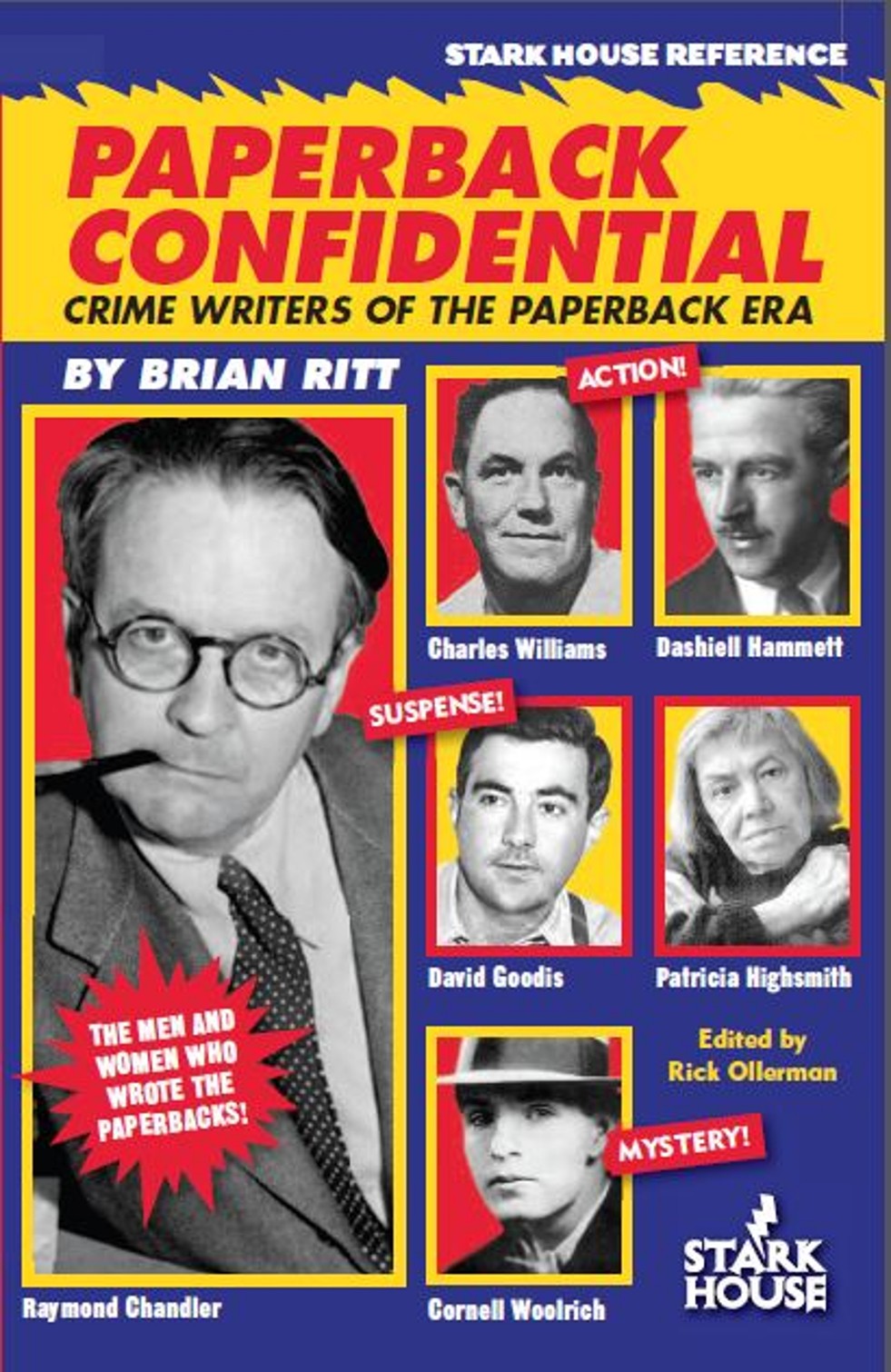 Paperback Confidential: Crime Writers of the Paperback Era
Paperback Confidential: Crime Writers of the Paperback Era
edited by Brian Ritt
Stark House, July 2013, $19.95
A few (but not enough) of the girls return in Paperback Confidential: Crime Writers of the Paperback Era, Brian Ritt's snappy, scrappy collection of profiles of the men and women who worked the black vein of crime for the burgeoning paperback market from the 1930s through the 1960s, covering everyone from the usual suspects (Hammett, Chandler, Cain, Woolrich, yawn) to almost-forgotten outliers (Gil Brewer, Norbert Davis, Brett Halliday, Day Keene, Charles Williams, David Goodis, Elisabeth Sanxay Holding, Ennis Willie, Douglas Sanderson, and more). Surface-scratching bibliographies round outy each of the 132 brief entires, but it's Ritt's punchy, breezy take on these ink-stained miscreants that will stick with you—and have you prowling used bookstores like a junkie looking for H.
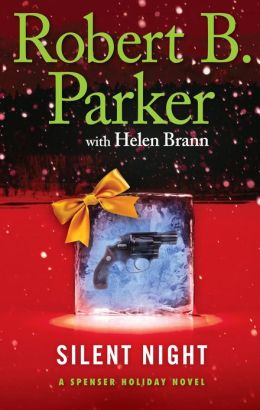 Silent Night
Silent Night
by Robert B. Parker & Hellen Brann
Putnam, October 2013, $24.95
The story goes that the late Robert B. Parker was at his desk working on Silent Night, a holiday-themed Spenser novel, the morning he shuffled off this mortal coil, and that it was up to Helen Brann, his literary executor and long-time agent, to wrap it up and put a bow on it. Spenser's long-planned preparations for a spectacular Christmas feast are sidetracked when he and Hawk get involved in helping out an at-risk street kid. Kitchshy? Probably. A cynical attempt to cash in? Almost assuredly. But it's Spenser. Who else in crime fiction would you rather have preparing your holiday meal? Jack Reacher? Kinsey Millhone? Skink? The mind boggles... and the stomach lurches. A final gift from one of the true greats.
 The Big Book of Christmas Mysteries
The Big Book of Christmas Mysteries
edited by Otto Penzler
Vintage Crime, October 2013, $25.00
Of course, the holidays and crime are no strangers to each other. Since at least 1892 when Arthur Conan Doyle had Sherlock Holmes goosing "The Adventure of the Blue Carbuncle," mystery authors have been decking the halls with seasonal murder and mayhem. And so right on times comes The Big Book of Christmas Mysteries to round up all the usual suspects, as well as a few surprising outliers. Featuring the aforementioned classic tale by Doyle, as well as stories by Agatha Christie, Ed Gorman, Dick Lochte, Robert Louis Stevenson, Ellery Queen, Rex Stout, Sara Paretsky, Ed McBain, Mary Higgins Clark, Ngaio Marsh, Peter Lovesey, Max Allan Collins, Stanley Ellin, John D. MacDonald, Damon Runyon; Donald E. Westlake, John Mortimer and more. The perfect book to while away the time, waiting for the intended victims relatives to arrive.
Silencing Eve, the final book in the latest Eve Duncan trilogy, starts by giving readers a shock: Eve is dead. Or at least that’s what her friend, Catherine Ling, believes as she heads to the forensic sculptor’s funeral. But as in most Eve Duncan paranormal suspense novels, not all is as it seems, and the search is on to find Eve—if she is still alive—and her kidnapper, Jim Doane.
As the Eve Duncan saga has grown, so has the list of her allies, and this book features them all, including Jane MacGuire, her adopted daughter; Joe Quinn, her husband; John Gallo, the father of Eve’s daughter, Bonnie; CIA agent Catherine Ling; and Scotland Yard’s Mark Trevor. It also includes characters whose “special talents” have been witnessed in previous books, including Kendra Michaels, whose blindness earlier in life gave her special deductive abilities; Margaret Douglas, who can communicate with animals, and Seth Caleb, who can affect the flow of blood in those around him. It also includes a couple of people who may or may not be on Eve’s side, including assassin Lee Zander, who is possibly Eve’s father, and CIA agent Venable.
The cast of characters is huge, and Johansen does an admirable job of keeping track of all of them. My only real complaint is that in trying to let readers who are not familiar with her earlier books learn about each character, Johansen turns what should be a wrenching funeral scene into what seems like a meeting of the Super Friends. While readers of Johansen’s novels expect to suspend disbelief—after all, the series is based on the disappearance of Eve’s daughter, Bonnie, who communicates with her from beyond the grave—the story gets bogged down in each character’s backstory.
What I especially like about the book is that it comes full circle; in Johansen’s earlier books, readers identified with Eve as a grieving mother searching for her lost daughter; in this book, Bonnie is back to help Eve, as well as others, deal with the pain of loss. The action is fast and the conclusion satisfying, and Johansen throws in a few surprises to keep the reader’s attention. This book also serves as a strong launch pad for Johansen’s future books, which I expect from what I’ve seen here, will begin to focus less on Eve and more on the intriguing characters around her.
When confronted with two murders committed in a similar manner (the victims heads have been bludgeoned so thoroughly as to be unidentifiable), Detective Inspector Andrew Hicks at first assumes coincidence. As new bodies appear, however, he is forced to conclude he is dealing with a serial killer. Then the killer contacts him to hint that he is manipulating the authorities. As Hicks continues his investigation, he begins to suspect he has some connection with the killer—the truth, however, is far stranger than that.
Even as it relates the compelling tale of an ongoing police investigation, The Murder Code delves into the intense story of Hicks’s personal journey. Hicks is at a crossroads, spiralling downward both emotionally and professionally. The case forces him to confront painful issues from his past and the present, also forcing resolutions to those problems, something he has been consciously avoiding for years. Both stories move together to surprising, and satisfying, denouements. It’s telling that Mosby has received a favorable blurb from Val McDermid (“Steve Mosby has become one of a handful of writers who make me excited about crime fiction.”), in that his writing often brings that author’s unflinching, eminently readable style to mind. Mosby knows how to tell a compelling story, making the CWA Dagger Award winner’s American debut not only recommended, but “must” reading.

He coulda been a contender
Sure, everyone knows Chandler and Hammett and Macdonald, but the hardboiled highway’s jammed with broken heroes who never quite made it. A case in point is William Ard.
Ard coulda been a contender. He was one of those writers who mined the pulp fiction vein to much success and acclaim, and he had potential in spades, only to be almost completely forgotten a few years after he was gone; a journeyman writer who burned bright and hot for a few short years.
His career lasted little more than a decade, fitting almost exactly into the ’50s. His first novel was accepted in November 1950, and he passed away in March 1960. But in those ten short years, he produced a staggering amount of work in both hardcover and paperback for both the crime and Western markets. As Jonas Ward, he cranked out a string of almost two dozen Westerns featuring rambling West Texas gunfighter Tom Buchanan, and under his own name (as well as several pen names, including Ben Kerr, Thomas Wills and Mike Moran) he wrote another 30 or so crime novels, most of them hardboiled affairs featuring tough private eyes, mostly from New York.
Do the math. Ten years. Fifty-five or so books. That’s five books a year, easy. Enough for new books to be regularly published, often as paperback originals, for several years after his death. Whatever else he might have been doing, Ard wasn’t kidding around.
* * * * *
A former Marine, Ard graduated from Dartmouth in 1944, and worked for the Buchanan Ad Agency in New York. Her met his future wife, Eileen, there. The two were married in 1945, and Ard soon left to take a job as a publicist for Warner Bros. Early author biographies suggested he also worked, briefly, just after WWII, as a detective.
 But “he always wanted to be a writer,” Eileen recalled. “He started writing short stories in college. I don’t know where they are now, but when he started with Warner Bros., he decided he would just write.”
But “he always wanted to be a writer,” Eileen recalled. “He started writing short stories in college. I don’t know where they are now, but when he started with Warner Bros., he decided he would just write.”
The newlyweds moved to the New York suburbs. Ard kept writing.
In 1947, their first daughter was born. Ard kept writing.
In November 1950, a son followed. The day he went to bring Eileen and the baby home, he received notice that The Perfect Frame had been accepted for publication.
“We were able to pay the hospital bill with the advance,” Eileen said.
And Ard kept writing.
* * * * *
The Perfect Frame introduced what was to be Ard’s best-known detective, Timothy Dane. He would eventually appear in nine more novels. Partial to Seagram’s Seven and an occasional steak at Toot Shor’s if he was in the chips, Dane was a young (thirtyish) New York gumshoe with a rep for honesty.
He was tall, and knew how to handle himself. Some women find the ex-Marine “handsome as hell,” and he certainly seemed to know his way around the Big Apple hotspots of the time. No, Ard didn’t reinvent the wheel. His crime fiction was very much of its time: crooked cops, corrupt politicians, treacherous women, and murderous thugs pitted against a big-shouldered detective with a smart mouth and a Colt .45.
But Dane did have a gimmick, of sorts. It was decency. His appeal lay in the fact that deep down, he was just an average guy trying to do his job the best way he could—while holding on to his integrity if possible. A nice change of pace, considering that his rivals on the paperback racks were such scenery chewers as Mike Hammer and Shell Scott. Sure, Dane carried a .45, and wasn’t afraid to use it, but he showed a compassion and sensitivity rare for the time, recalling Ross Macdonald’s later Lew Archer novels, or perhaps Thomas B. Dewey’s Mac, who were both contemporaries of his. But Ard rarely let his heroes wallow or brood. They displayed a well-earned skepticism more than a bleak, bitter cynicism. Besides, there was no time for moping—someone was bound to come through the door with a gun at any moment. Or the phone would ring, and it would be more trouble on the line.
* * * * *
 Pumping out books the way he was, it would be silly to suggest everything Ard produced was golden. It wasn’t. But Ard knew how to tell a story, and he knew how to keep things moving. His books were tight and taut; lean but rarely mean blasts of action and character. He was able to create characters that seemed real, and to make readers care about what happened to them.
Pumping out books the way he was, it would be silly to suggest everything Ard produced was golden. It wasn’t. But Ard knew how to tell a story, and he knew how to keep things moving. His books were tight and taut; lean but rarely mean blasts of action and character. He was able to create characters that seemed real, and to make readers care about what happened to them.
The young family moved to Florida in 1953. Slowly but surely he was building a solid rep. Anthony Boucher was an early supporter, praising Ard, citing him as “just about unmatched for driving story-movement and acute economy,” and by 1958, his publisher was touting him as “one of America’s most successful mystery and suspense writers.”
He continued to write detective novels—and Westerns. Other private eyes included Lou Largo, Johnny Stevens, Barney Glines and Mike (later Danny) Fountain.
Ard was only 37 when he died of cancer in 1960.
* * * * *
The good news is that the collectors haven’t really latched onto Ard yet, so finding decently priced new copies shouldn’t be a problem. Do yourself a favor—next time you see one in a used book store or a yard sale or a flea market, pick one up.
Read it, enjoy. And think about what might have been.
In March 2011, Ramble House published Perfect .38, the first volume of an ambitious project to bring back all of William Ard’s hardboiled mysteries. It collects two of the earliest Timothy Dane novels, The Perfect Frame and .38. Two more volumes, Two Kinds of Bad and Calling Lou Largo!, have since been released.
This article first appeared in Mystery Scene Summer Issue #120.

For the past four years, the International Thriller Writers has worked with the USO/Armed Forces Entertainment to bring some of our top crime fiction writers to soldiers and military families. At various stops, the authors will discuss their works, talk with the soldiers, and families if around, and hand out copies of their books.
The tour generally is held the last week of October through the first week of November, and, for security reasons, isn’t made public until they return.
This year, “Operation Thriller IV” featured Harlan Coben, Phillip Margolin, F. Paul Wilson, Kathleen Antrim and Heather Graham.
Before the nine-day, four-country USO tour, the group spent three-days in Washington, D.C.
“We make up heroes for a living,” said Coben, said in an email. “Now we get to meet real-live ones and express in some small way our gratitude. I can't imagine a greater honor,” added Coben, whose latest novel is Six Years.
Since its inception, I have written about this tour for Mystery Scene and each year it gives me a little thrill to know crime fiction authors are willing to do this. These authors would still have fans—among civilians and the military—but they forgo regular book tours and their writing schedules to honor our troops.

“Every day thousands of men and women in our armed forces risk their lives so I have the freedom to write my novels or play with my grandchildren or just play golf without fear,” emailed Phillip Margolin, whose latest novel is Sleight of Hand. “This tour is my way of thanking them for the sacrifices they make for me and every other American."
This year’s USO tour included stops in Kuwait, where they visited Camp Arifjan and Camp Buehring, before heading to Germany.
“Operation Thriller IV” kicked off with an autograph signing at the newly constructed USO Warrior and Family Center at Fort Belvoir in Virginia.
The authors also met with wounded warriors at Walter Reed Bethesda National Military Medical Center, attended the presentation of the Service Member of the Year Awards at the 2013 USO Gala, and visited the Quantico Marine Corps Base.

“Throughout my life, I have been in awe of and amazed and humbled by our troops, past and present,” said Heather Graham, whose latest novel is The Night Is Forever.
“What they do for me, for all of us, is so great that it can't be quantified. I am humbled and privileged to be given a chance to cast a drop in the bucket that should be filled a thousand times over for the services our men and women in uniform perform for our country. There is no way to really thank them,” added Graham in an email.
The USO tour continues to be a humbling experience for the authors.
“I am honored to be included on this tour,” wrote F. Paul Wilson, author of the Repairman Jack novels, the latest of which is Dark City.

“I've spent more years than I care to number spinning tales about fictional men and women who face down threats to their values and way of life. Now I get the chance to mix with the genuine article and thank them for putting themselves in harm's way,” he added.
“We owe so much to these men and women and to the USO, a fantastic organization that quietly serves our military," added Kathleen Antrim, whose latest novel is Capitol Offense.
Since it began, the “Operation Thriller” USO tour series has sent 14 authors to seven countries, including Kuwait, Oman, Qatar, Turkey, Kyrgyzstan, Afghanistan and Iraq.
The authors who have made this trip include Michael Connelly, Brad Meltzer, Joseph Finder, David Morrell, James Rollins, Douglas Preston, Kathy Reichs, Steve Berry, Clive Cussler and Mark Bowden, among others.
For more information about the USO, visit uso.org.
Photos: Top, Harlan Coben with the troops;
Center, Heather Graham, Harlan Coben, Kathleen Antrim, F. Paul Wilson, and Phillip Margolin tour Landstuhl Regional Medical Center in Germany;
Third photo, Phillip Margolin and F. Paul Wilson part of the Operation Thriller IV Tour sign copies of their books at a display during a signing at the base exchange at Marine Corps Base Quantico in Virginia;
Bottom, Phillip Margolin discusses writing with injured soldier Spc. Raymond Garcia while Harlan Coben and Heather Graham visit with another service member in the background during a tour stop at Landstuhl Regional Medical Center in Germany.
Photos courtesy USO
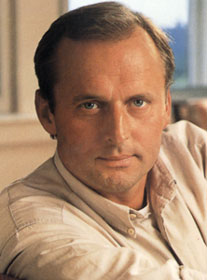
I am sad to report that the stage adaptation of A Time To Kill based on the novel by John Grisham, at left, will be closing its Broadway run on Nov. 17.
The courtroom drama had its world premiere in May 2011 at the Arena Stage in Washington, D.C., where it received a good response from critics and audiences.
And A Time To Kill’s pedigree is quite good.
It was adapted by Rupert Holmes, the Tony-, Edgar- and Grammy-Award winning playwright and composer.
Ethan McSweeny, who directed the Arena Stage version, helmed the Broadway play. The cast included John Douglas Thompson, Sebastian Arcelus, and Fred Dalton Thompson, who played District Attorney Arthur Branch for five seasons on Law & Order, making his Broadway debut.
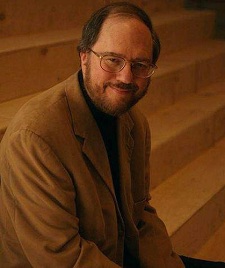
A Time To Kill was Grisham’s first novel and, in many ways, it was a game changer for the legal thriller. It wasn’t just about the law—it was about a community, racism and idealism.
And Rubert Holmes, rght, one of my favorite playwrights, is responsible for one of the best theatrical evenings of my life when my husband and I saw his Curtains during its previews.
Holmes has twice taken home a Tony, for Accomplice in 1991 and for The Mystery of Edwin Drood in 1986. The musical Curtains, a tribute to mystery fiction plots, earned Holmes a 2007 Drama Desk Award for its book. Nominated for 17 Tonys, Curtains also earned Tony Awards for David Hyde Pierce (best actor in a musical) and Debra Monk (best supporting actress in a musical).
Holmes also is a mystery writer. Swing was set in San Francisco and included its own soundtrack. (Mystery Scene profiled Holmes in the Winter 2010 issue, No. 113.)
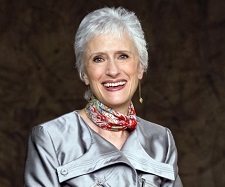
Each year, the Key West Literary Seminar focuses on a different aspect of literature and, finally, 2014 is crime fiction’s time. This highly respected seminar calls its 32nd annual gathering “The Dark Side” as it explores the mystery, crime and thriller genres with some of the top authors.
The seminar is divided into parts with different authors at each session. Chapter One will be Jan. 9-12, 2014, and the Final Chapter is Jan. 16-19, 2014. The seminars are held at the San Carlos Institute, 516 Duval Street, Key West.
And I know first-hand that Key West in January is not a bad place to be. Balmy breezes, outdoor dining and just a slight, often very slight, nip in the air.

But if you are going, hurry up as registration for the Key West Literary Seminar fills up quickly. Chapter One is now accepting a waitlist.
The cost includes all talks and panels, beginning Thursday evening and concluding Sunday around noon. Evening receptions and meals are also included.
January also is a prime tourist season for Key West so it’s important to book a room early whether at one of the many hotels or the myriad charming bed and breakfasts or small inn that dot the island.
And if you go, don’t miss the sunset, which is a major event in Key West.
Seriously. It’s a mini festival on the docks when the sun goes down.

Sara Paretsky, top photo, is the key note speaker for Chapter One while Elizabeth George, second photo, does the honors for the Final Chapter.
Here are some of the authors who are scheduled.
Chapter One: Megan Abbott, Gillian Flynn, Carl Hiassen, James W. Hall, Laura Lippman, John Katzenbach, Val McDermid, Scott Turow, Alexander McCall Smith, John Sanford, among others.
The Final Chapter will include Alafair Burke, Lee Child, Michael Connelly, Lisa Unger, Thomas H. Cook, Tess Gerritsen, Sara Gran, William Kent Krueger, right, Michael Koryta, among others.
Photos: From top: Sara Paretsky, Elizabeth George.William Kent Krueger

By OLINE H. COGDILL
The names that authors choose for their novels can reveal a personality trait and make a difference to the plot.
Dick and Sally, Spot and Mew Mew may have worked for those first readers we had years ago, but not for crime fiction.
Michael Connelly’s choice of Harry Bosch for his lead character suggests a man forever in turmoil. Jack Reacher illustrates a man forever out of reach of the mainstream as Lee Child proves time and again. V.I. Warshawski with her Italian-Polish background is a tribute to immigrant neighborhoods of Chicago as Sara Paretsky often shows.
That attention to names and what they can mean were problems that faced Hank Phillippi Ryan, left, when she was writing The Other Woman, the first of her Jane Ryland novels.
She had the plot worked out and the supporting characters named. But she couldn’t come up with the last name for her heroine. She had Jane, but what would be Jane's last name?
Ryan is a proven talent and she knew that the name of her heroine would stay with her for a long time.
It was getting time to send in her manuscript and Ryan was on a train, still contemplating what to call her character. Ryan, in frustration, told herself that the next name she saw outside her window would be the name of her character.
And the next name that came up on a billboard was Ryland Industries.
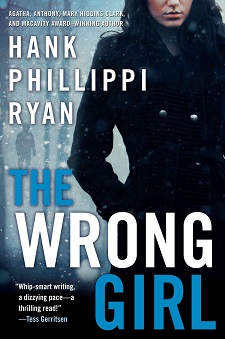
And thus was born Jane Ryland, the former TV reporter turned newspaper journalist in Ryan’s new series.
Jane Ryland—don’t forget that name—is the heroine of The Other Woman and Ryan’s latest novel, The Wrong Girl.
Ryland may have just been words on a billboard but the name conjures a kind of sturdiness, an attention to good business practices and a sense of reliability. And Jane Ryland, investigative reporter certainly is that.
I had never heard the story of how Jane’s name came to be until Ryan was the guest at the recent book club sponsored by WXEL, the PBS station in South Florida. This book club actually has the authors come to discuss their works with the participants.
The sessions are filmed and are put on YouTube.
You can watch Ryan’s session here.
(I will be the guest talking about historical mysteries on Nov. 21, 2013, so come on down. Details here.)
Ryan told this story when the moderator, Joanne Sinchuck of Murder on the Beach, asked her was she aware that Ryan and Ryland sounded so similar. Ryan said that other readers had commented on that, too.
Ryan also mentioned that the lawyer in Defending Jacob by William Landay is based on her husband, Jonathan Shapiro, a criminal defense and civil rights attorney.
And that is why I sometimes go to book events, to hear these little gems.

The prolific Robert Ludlum, who died in 2001, is one of those authors whose characters are still with us.
Douglas Corleone, left, author of the exciting Good As Gone, is the latest author who has been tapped to continue Ludham’s brand.
Corleone will be the author of Robert Ludlum’s The Janson Equation, the fourth novel in the Paul Janson series. No word yet when the novel will be published.
The Janson novels—not to be confused with the Jason Bourne series—have an interesting history.
The first The Janson Directive was published posthumously in 2002, the year after Ludlum’s death. Other authors also have been tapped in the past to continue other Ludlum series.
The second and third novel were finished byPaul Garrison.
Paul Janson follows the footsteps of Ludlum’s other characters.

Janson is a former Navy SEAL and former member of a U.S. government covert agency Consular Operations. He is haunted by his memories of the Vietnam War during which he was captured and tortured by the Viet Cong. Janson is now a corporate security consultant who is in much demand so he picks which jobs he takes.
Needless to say, Corleone is quite happy about this opportunity. "I'm thrilled that the Ludlum legacy lives on and that I get to be a part of that," Corleone emailed me.
Corleone’s Good As Gone shows that he can produce an action-packed story.
In my review of Good As Gone, I said: “Simon Fisk, the hero of Douglas Corleone’s new series, could easily be a cousin of Jack Reacher. Like Reacher, the hero of Lee Child’s best-selling novels, Simon is a loner constantly on the move, with a background in law enforcement and a penchant for coming to the rescue of those in need.
“And like Child, Corleone delivers an adrenalin-fueled plot with believable, complex characters. Reacher and Simon could indeed be cousins, but each is a distinct character. As Good as Gone proves, Corleone shapes Simon with a unique personality and background, intriguing enough to maintain a long-running series.”

This is what happens when you start cleaning out a bookcase—you take a trip down memory lane.
I was recently cleaning out some old books, ones I had enjoyed but time to make room for the new ones I love. (For the record, I kept more than I will give away.)
That’s when I came across Everybody Smokes in Hell by John Ridley, left, which I had given raved about to in 1998.
1998…my goodness that was a lifetime ago.
I momentarily wondered what happened to John Ridley and then I remembered: A lot has happened.
Ridley wrote seven novels from 1997 through 2006, including Stray Dogs, Love Is a Racket and What Fire Cannot Burn. These were edgy novels about people on the margins of society.
But his novels have given way to his real love—screenwriting.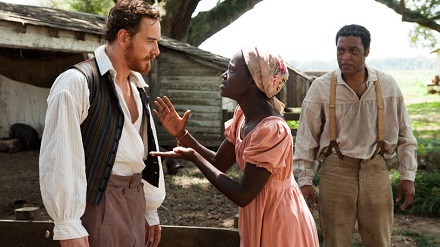
You may have heard of his latest screenwriting project—12 Years a Slave. It is only the most talked about film of the year, a sure-fire Oscar nominee for best film, actor, actress, screenplay and just about every award imaginable.
Ridley has always wrote screenplays. He turned his novel Stray Dogs into the 1997 Oliver Stone-directed film U Turn. Ridley's directorial debut, Cold Around the Heart, won him the best director award at the Urbanworld Film Festival in New York.
He also scripted and co-produced the movie Three Kings, starring George Clooney, Mark Wahlberg and Ice Cube.
He also wrote for the TV series Third Watch and Barbershop.
He also is a playwright, making his debut with Ten Thousand Years, and has been a commentator for National Public Radio.
His next screen project is All Is By My Side, a drama based on Jimi Hendrix's pre-fame years. He directed the film and wrote the screenplay and was working on 12 Years a Slave and All Is By My Side.
In my review of Everybody Smokes in Hell, I said “Paris Scott -- failed actor, writer, musician -- is all too aware that he's already another Los Angeles failure. He knows it every time he thinks about his former girlfriend, calls his parents for money or goes to work at a convenience store.
“Paris is a loser—‘the toll the city of his dreams had taken on him was just now reaching critical mass.’ He's not a bad guy, but he's no angel and he's the closest thing Everybody Smokes in Hell has to a hero. Through a series of coincidences and mistakes, Paris may finally have found his fortune. He has the last master tape of a "suicided" rock star and, although he doesn't know it, a small fortune in stolen drugs.
“In Everybody Smokes in Hell, author John Ridley merges an old-fashioned caper with a dark screwball comedy for a thriller about greed, power and respect. Set against the backdrop of those meccas of materialism, Hollywood and Las Vegas, Everybody Smokes in Hell continues Ridley's provocative look at the seamy side of life.
“Everybody Smokes in Hell is a Pulp Fiction sort of ride that echoes the kind of characters relished by readers of novels by Jim Thompson, James M. Cain and Elmore Leonard.”
Mystery fiction’s loss is the movie goers’ gain. And by the way, Everybody Smokes in Hell is still on my bookshelf.
Photos: Top, John Ridley; Center, Michael Fassbender, left, Chiwetel Ejiofor and Lupita Nyong'o in 12 Years a Slave. Photos courtesy Fox Searchlight
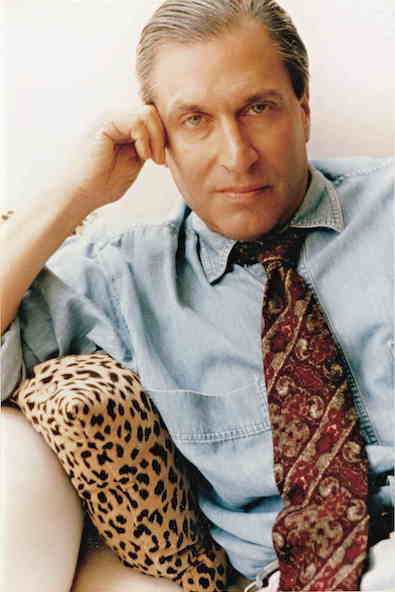 Take It to the Bridge
Take It to the Bridge
Nicholas Meyer’s work as a novelist, screenwriter, and director is a testament to the power of popular art to entertain, illuminate, and—on occasion—affect the course of history. He’s taken audiences from Victorian England (The Seven-Per-Cent Solution) to the 23rd century (Star Trek II, IV, and VI) to the end of the world as we know it (The Day After). A firm believer in story and character, he upholds these virtues in an industry that prides itself on spectacle and stereotype.
Meyer’s own story began in New York City on Christmas Eve, 1945. The son of psychiatrist and author Bernard C. Meyer and concert pianist Elly Kassman, he was raised in comfort on the Upper East Side. Meyer was one of those children who are motivated by interest and not by discipline. School was a trial and a chore. Jules Verne, Alexandre Dumas, Classics Illustrated comic books, and late-night movies provided his real education.
After graduating from the University of Iowa, he worked as a publicist for Paramount Pictures, then moved to Los Angeles in the early ’70s to pursue a career as a screenwriter. Early efforts included the TV movies Judge Dee and the Monastery Murders (1974) and The Night That Panicked America (1975, co-written with Anthony Wilson). Dee was an adaptation of one of Robert van Gulik’s mysteries about a real-life Tang dynasty circuit court judge. Night was a retelling of the havoc created by Orson Welles’ 1938 “War of the Worlds” radio broadcast. Both scripts reveal Meyer’s penchant for stories set in the past that involve historic characters—a proclivity that would bring him his first major success.
The Writers Guild of America went on strike in 1973. As Meyer writes in his memoir The View From the Bridge, he finally had the opportunity to start:
...banging away at my long-gestating notion of a Doyle pastiche in which Sherlock Holmes met, matched wits with, and finally collaborated with Dr. Sigmund Freud. Freud cures Holmes’ cocaine addiction; in return, Holmes’ methodology sets Freud on the analytic path that will lead to psychoanalysis.
That notion became The Seven-Per-Cent Solution (1974). The novel was a best seller and was made into a film two years later. Meyer’s screenplay garnered an Academy Award nomination.
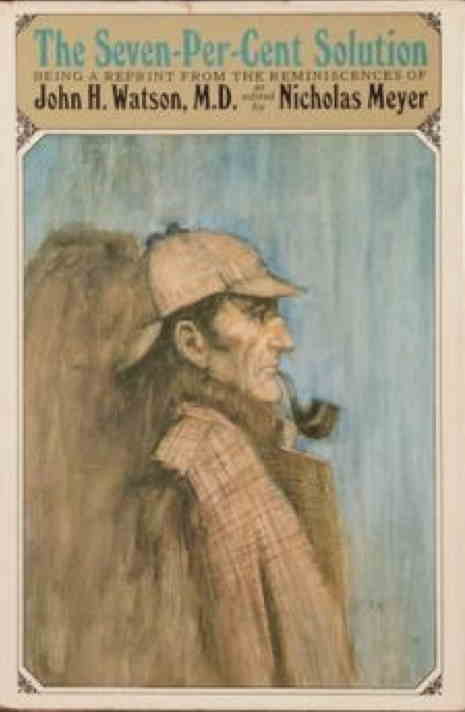 Not content to merely put Holmes and Watson through their paces, Meyer reexamined the very basis of their world. Far from being “the Napoleon of Crime,” Professor Moriarty is a victim of Holmes’ cocaine-induced paranoia. He’s also the reason for the kinks in Holmes’ psychology. The great detective’s misogyny, as well as his single-minded crusade against crime, stem from Moriarty’s involvement in Holmes’ childhood.
Not content to merely put Holmes and Watson through their paces, Meyer reexamined the very basis of their world. Far from being “the Napoleon of Crime,” Professor Moriarty is a victim of Holmes’ cocaine-induced paranoia. He’s also the reason for the kinks in Holmes’ psychology. The great detective’s misogyny, as well as his single-minded crusade against crime, stem from Moriarty’s involvement in Holmes’ childhood.
Two sequels followed. The West End Horror (1976) is set in Victorian London’s theatre world and peopled with such luminaries as George Bernard Shaw, Oscar Wilde, Bram Stoker, and Gilbert and Sullivan. A copy of Romeo and Juliet provides a dying clue to a secret that could destroy England, if not the Continent itself. Horror is a better-constructed book than its predecessor. Solution divides into two enjoyable halves—Holmes’ cure and the case that followed—whereas Horror’s story is all of a piece. Meyer is justifiably proud of his achievement.
The Canary Trainer (1993) takes place during the period of Holmes’ peregrinations through Europe after his “death” at Reichenbach Falls. Employed as a violinist in the orchestra of the Paris Opera, Holmes must grapple with the ghostlike figure who haunts the building’s vast and gloomy underground. Meyer’s third pastiche builds to an explosive ending, thanks to dynamite belonging to the builders of the Paris Metro.
Negotiations with the Conan Doyle estate for the use of the Holmes and Watson characters dragged on for so long that Meyer wrote another book while waiting for Solution to be cleared for publication: Target Practice (1974).
Meyer has called the book a Ross Macdonald pastiche. Target Practice’s first-person narration owes something to Lew Archer’s wearily sympathetic tone. More importantly, Meyer shares with Macdonald a sense of how private torment and public events are intertwined. For Macdonald’s characters, the public event was often World War II. For the characters in Target Practice, it’s Viet Nam.
Sergeant Harold Rollins III, accused of collaborating with the enemy while being held in a North Korean P.O.W. camp, has committed suicide. His sister Shelly suspects he may not have killed himself and wants him posthumously cleared of the charges. She hires private detective Mark Brill to investigate. Brill is a middle-aged widower, an ex-cop and ex-military man who uses his job as a screen between himself and the rest of the world. The case takes him from Los Angeles to the East Coast and the Midwest before the skein of incest and murder is untangled and another death occurs. Target Practice was deservedly nominated for a Best First Novel Edgar. (It lost to Gregory Mcdonald’s Fletch.)
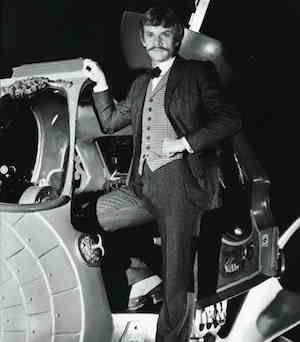 Meyer debuted as a film director with Time After Time (1979). He also wrote the screenplay, which was based on a novel by University of Iowa classmate Karl Alexander. In the film H.G. Wells doesn’t just write about time machines, he’s actually invented one. It’s stolen by a doctor acquaintance who is, in fact, Jack the Ripper. Jack finds himself in 20th-century San Francisco, where the chaos and violence of the modern world strike him as tonic. Wells (played by Malcolm MacDowell, see photo on left) follows the Ripper to the city by the bay and attempts to bring him back to the 19th century and justice. It’s a gem of a film, moving and sometimes terrifying.
Meyer debuted as a film director with Time After Time (1979). He also wrote the screenplay, which was based on a novel by University of Iowa classmate Karl Alexander. In the film H.G. Wells doesn’t just write about time machines, he’s actually invented one. It’s stolen by a doctor acquaintance who is, in fact, Jack the Ripper. Jack finds himself in 20th-century San Francisco, where the chaos and violence of the modern world strike him as tonic. Wells (played by Malcolm MacDowell, see photo on left) follows the Ripper to the city by the bay and attempts to bring him back to the 19th century and justice. It’s a gem of a film, moving and sometimes terrifying.
His biggest challenge—and proudest accomplishment—as a director was the TV movie The Day After (1983). What if the unthinkable happened and a nuclear war took place? Edward Hume’s script followed a handful of characters in Lawrence, Kansas, and environs before and after a nuclear strike. The devastation is immense. All is “changed, changed utterly,” in Yeats’ words, and for the very worst.
Filming was a massive undertaking not made easier by a skittish network, and the finished product was attacked by conservative pundits and apologists such as William F. Buckley and Henry Kissinger. It’s estimated that over a 100 million people watched The Day After when it was broadcast on the evening of November 20, 1983. President Ronald Reagan saw the film before its ABC showing. His belief that a nuclear war could be won was changed by The Day After. Reagan claimed the movie contributed to his signing of the Intermediate-Range Nuclear Forces Treaty in 1987. If one has doubts about the ability of art to affect the world at large, one need only point to The Day After.
Meyer is perhaps best known as the man who saved Star Trek (and killed Spock in the process). For the lowdown on his involvement as a writer and/or director on three of the original-cast films, seek out The View From the Bridge: Memories of Star Trek and a Life in Hollywood (2009). The Trek devotee will not be disappointed and neither will the more casual reader. Bridge is as thoughtful and outspoken as its author. Meyer is as quick to tell you about his flaws and failures as he is of his successes. Bridge’s only flaw is that it isn’t longer.
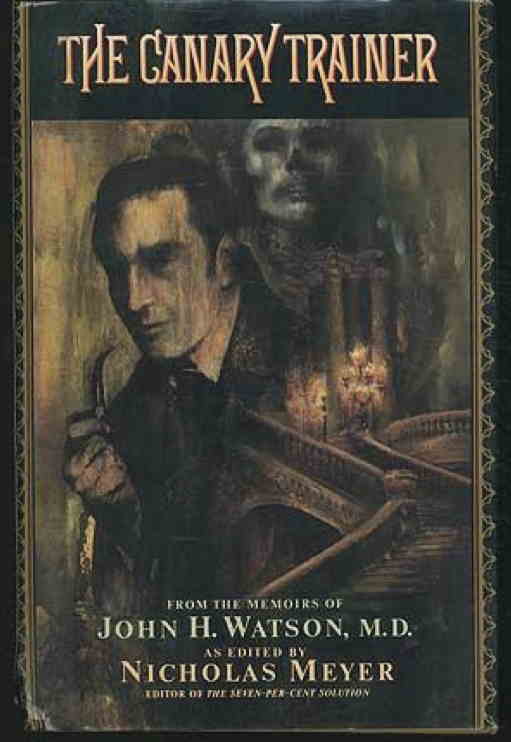 Meyer’s novel Confessions of a Homing Pigeon (1981) isn’t a mystery, though it deals with the biggest mysteries of all: love and loss, life and death. When young George Bernini’s trapeze artist parents die in a circus accident, he’s sent to postwar Paris to live with his Uncle Fritz, an eccentric composer and pianist. Their adventures together are wild and winning but come to an abrupt end when Fritz loses custody of the child to an aunt in Chicago. George is dropped into the heart of Eisenhower’s America. A most unhappy fish out of water, he dreams of nothing but returning to France. But how is he going to do it?
Meyer’s novel Confessions of a Homing Pigeon (1981) isn’t a mystery, though it deals with the biggest mysteries of all: love and loss, life and death. When young George Bernini’s trapeze artist parents die in a circus accident, he’s sent to postwar Paris to live with his Uncle Fritz, an eccentric composer and pianist. Their adventures together are wild and winning but come to an abrupt end when Fritz loses custody of the child to an aunt in Chicago. George is dropped into the heart of Eisenhower’s America. A most unhappy fish out of water, he dreams of nothing but returning to France. But how is he going to do it?
It’s clear that Confessions draws on the circumstances of Meyer’s life. A checkered school career, the power of art to soothe and save, the death of a loved one from cancer are part and parcel of Meyer’s experience—and that of others.
I’m one of those others. I’ve loved Confessions since I first saw it on the new-arrivals shelf in a small-town library in Minnesota and took it home. It’s my favorite of Meyer’s books, and a copy of it rests on the desk beside me as I type these words, all these many homes later.
Nicholas Meyer is alive and well and working in Los Angeles. I can’t wait to see what he does next.
Joseph Goodrich is the author of the Edgar-winning play Panic and the editor of Blood Relations: The Selected Letters of Ellery Queen, 1947–1950. He lives in New York City.
This article first appeared in Mystery Scene Summer Issue #130.
 "A Knight in Rusted Armor"
"A Knight in Rusted Armor"
Photo: Dorothy Prentiss MacDonald
John D. MacDonald (1916–1986) is most famous for his phenomenally popular Travis McGee novels about the adventures of a tough, cynical, philosophical knight-errant living on a houseboat, The Busted Flush, in Fort Lauderdale. The series began with The Deep Blue Goodbye in 1964 and concluded, 20 books later, with The Lonely Silver Rain in 1985.
In 1955 he won the Ben Franklin Award for the best American short story, and in 1964 he received the Grand Prix de Litterature Policiere for the French edition of A Key to the Suite. In 1972, MacDonald was named a Grandmaster of the Mystery Writers of America. In 1980 he won the American Book Award for his Travis McGee mystery The Green Ripper. He spent the later years of his life in Florida with his wife and son, and died in 1986.
MacDonald’s work has influenced many contemporary authors, from Stephen King and Mary Higgins Clark to Lee Child, who has called McGee “a knight in rusted armor.” Sue Grafton has called MacDonald “a dominant influence” in the genre, while Dean Koontz crowned him “my favorite novelist of all time.”
I interviewed John D. MacDonald three times over the years, twice for Mystery Scene.
My impression of him was that he was neither humble nor arrogant. He took pride in his writing, but he viewed much of it as not working out quite as he’d hoped. He told me once that he sometimes judged his books by percentages. This book did 70 percent of what he’d hoped; that one did 80 percent.
He was generally kind to other writers, notably Charles Williams, whom he mentioned in two different interviews. He seemed to feel, as do I, that Williams should have broken out. My feeling was that Williams was too dark for the middle-class readers who flocked to MacDonald’s later work—which is funny because his early Gold Medals and Dells were pretty damned grim.
I think I’m borrowing from Larry Block when I say that some reviewers, especially in Europe, thought MacDonald was tame by the lights of Jim Thompson and David Goodis. They didn’t grasp the spiritual violence of such novels as A Key to the Suite (about a sales convention) and Slam the Big Door (the hollowness of success). Most of us die little deaths except for the final big death. We lose jobs, mates, dignity. A Key to the Suite, for instance, charts the demise of several careers and at least two marriages in ways every bit as powerful and memorable as any shootout.
I enjoyed the Travis McGees but always felt that they were inferior to his non-series work. They made him rich and brought him fame, but I often sensed that he wished he was still writing books such as Dead Low Tide and The End of the Night. Those early Gold Medals and Dells were some of the best crime novels of his generation.
In January, Random House will begin to release, for the first time ever, ebook editions of 70 of John D. Macdonald’s novels, including all of the Travis McGee novels. At the same time, Random House will publish—also for the first time ever—the McGee novels in trade paperback.
In addition, Random House will publish some of MacDonald’s long-out-of-print classics as ebook-only editions, starting in June 2013, and will continue the trade paperback and ebook releases of MacDonald’s most notable standalone novels, including the iconic Cape Fear, throughout the year and into 2014.
Here’s a list of some of my favorites, which just means that they’ve held up to rereading over many decades.

1. DEAD LOW TIDE
Here were see how JDM differed from most paperback hardboiled writers by taking the crime into the middle class. The falsely accused protagonist is a construction estimator—though he’s had a tough military background—trying to work his way up in his calling. In this early book JDM found his voice. The romantic, the social scold, the intelligent avenger. The killer is one of JDM’s finest and darkest creations.
2. SOFT TOUCH
Pure noir. Man married to a bimbo and employed by her father throws in with an old Army pal to pull off a caper that will make them rich. Many reviewers have complained that JDM’s romantic dialogue is sometimes so corny as to be painful. You won’t find any of that here. When the protagonist talks to his probably faithless wife the rancor is merciless. Soft Touch is a brutal ride with an ending Jim Thompson would have envied.
3. DEADLY WELCOME
While not as ambitious as some of his other books, Deadly Welcome is a violent and melancholy trip back in time. A State Department employee named Alex Doyle is ordered to go to a small town and convince a troubled scientist who can’t get over his wife’s murder to return to DC and his work on a secret project. The problem being that this is the town where Doyle grew up living in a shantytown. He returns reluctantly, with a grudge, looking for a killer and a way to purge himself of his rage. Not all JDM fans like this novel but I’ve read it three or four times and enjoyed it every trip out.
4. MURDER IN THE WIND
You could consider this JDM’s homage to The Bridge of San Luis Rey and/or Key Largo. Five disparate groups of people take shelter in an old house to wait out a hurricane. Page-turning excitement as they tear at each other and mother nature tears at them. In terms of range and aspiration, Murder in the Wind is his attempt to go big. The entire range of JDM’s skills can be found in this mesmerizing novel.
5. THE EXECUTIONERS
JDM didn’t like Cape Fear, the brilliant 1962 movie adaptation of this novel. Maybe because book and film differ in certain critical ways. Savage as the film is, the ending of the book is even more cold-blooded in this stunning tale of an attorney’s vengeance on a sociopath who has been stalking his family. Read the book, see the movie, as the flacks used to say.
6. SLAM THE BIG DOOR
Really more a fine mainstream novel than a thriller. A man, haunted by the death of his wife, decides to visit an old friend who seems to have everything. But in discovering what his friend’s life is really like, the protagonist must face himself in ways he’s always avoided. This book will hurt you. Few crime writers of his generation wrote so well about ordinary people and here we see JDM at the top of his game.
7. THE END OF THE NIGHT
A JDM like no other. In the late ’50s and early ’60s a number of American teenagers (separately and in small groups) went on “thrill kills.” The notorious Charles Starkweather was their patron saint. Here JDM writes about such a collection of young men. Stephen King admires this novel so much he compared it to Theodore Dreiser’s An American Tragedy (among others). It certainly has the same heft and genuine sense of tragedy. I can think of no equivalent in crime fiction. Grim and honest and honorable from start to finish.
 8. A KEY TO THE SUITE
8. A KEY TO THE SUITE
The more things change the more they stay the same. Though JDM is writing about the state of corporate America in 1962, much of this novel—set at a weekend business convention—remains true today. JDM shows us a number of corporate men, some on the way up and some on the way down, who must survive the numerous tests the corporate bosses use as a process of elimination. Few other writers could take a set-up like this and make it so relentlessly readable, not to mention as pungent and fierce and wise. A powerhouse little book. Dated man-woman stuff (same as the McGee novels).
9. A FLASH OF GREEN
James Wing is a reporter who knows what Florida real estate developers are really up to. A widow named Kat Hubble lives next door to him; he loves her. After he tells her that the bay she and her friends wanted to keep unblemished will soon fall into the hands of the realtors, she fights back and so do the developers. The difference is that they will let nothing stop them. Even in the early JDMs you find traces of his environmentalism. This is where he takes on the theme directly. Those who would destroy nature are monsters, and in this long, rich novel he takes them apart before it was fashionable. Ed Harris and Blair Brown starred in an excellent American Playhouse TV movie version.
10. THE DROWNER
This was the last of JDM’s Gold Medal original standalone crime novels and, to me, it’s one of his finest, an ingeniously complicated story about a woman who just happened to be a strong swimmer inexplicably drowning. The authorities see it as an accident. Her sister disagrees. The protagonist is a private eye but JDM keeps eschews the PI clichés. What makes it real—what made so many of his books real—is the description of the business world of both private investigation and the jobs of the suspects. As one reviewer wrote, “He showed us how the world really works.” You want a knockout mystery, here you go.
This article first appeared in Mystery Scene Winter Issue #128.
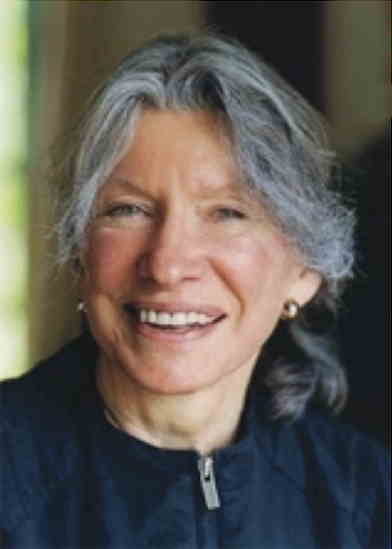 Witty cozies featuring a Harvard professor with wide-ranging intellectual interests.
Witty cozies featuring a Harvard professor with wide-ranging intellectual interests.
Photo: Janet Boynton
For over 40 years, Jane Langton’s mysteries about Homer Kelly, a homicide detective turned Harvard professor, have delighted fans with their wide-ranging erudition, intriguing characters, gentle humor, acute sense of place, social conscience, and charming illustrations.
Jane Gillson Langton (1922- ) was born and raised in Boston, and earned a bachelor’s degree in astronomy and an MA from the University of Michigan, where she met and married her late husband Bill Langton, a physicist, in 1943. Returning to New England, she earned another MA at Wellesley in 1948. The young couple settled in Lincoln, Massachusetts, near historic Concord where Langton still lives today.
Langton first had success writing children’s books, beginning with The Majesty of Grace, in which a young and spirited Depression-era Ohio girl decides that she is the rightful heir to the British throne.
As a young girl herself, Langton had loved the books of E. Nesbit and Arthur Ransome and says she “could imagine nothing more glorious than growing up to write a new Swallows and Amazons.”
After several rejections, Langton sent her manuscript for The Majesty of Grace “over the transom” to Harper, because they published her favorite children’s books. Langton remembers the encouraging letter she received back from editor Susan Carr fondly. “It was one of those days that Lewis Carroll marked with a white stone.”
Langton started a successful children’s series, The Hall Family Chronicles, with The Diamond in the Window (1962), which was nominated for an Edgar Award. She then had the idea of writing a mystery in the style of Dorothy L. Sayers, set in New England. Her setting, the book’s style, and her detective, Homer Kelly, were all heavily influenced by her love of Concord, Massachusetts.
 Concord is of course one of the sites of the Battle of Lexington and Concord, in advance of which Paul Revere rode to warn the revolutionaries of the British approach in April, 1775. The philosophical movement of Transcendentalism was founded in Concord in the 1830s and ’40s. Among the Transcendentalists’ core beliefs is the inherent goodness of both man and nature. Transcendentalists believed that society and its institutions—particularly organized religion and political parties—ultimately corrupted the purity of the individual. They had faith that man is at his best when truly “self-reliant” and independent. Well-known Transcendentalists included Ralph Waldo Emerson, Nathaniel Hawthorne, and Henry David Thoreau. (Thoreau’s famous Walden Pond is located in Concord.)
Concord is of course one of the sites of the Battle of Lexington and Concord, in advance of which Paul Revere rode to warn the revolutionaries of the British approach in April, 1775. The philosophical movement of Transcendentalism was founded in Concord in the 1830s and ’40s. Among the Transcendentalists’ core beliefs is the inherent goodness of both man and nature. Transcendentalists believed that society and its institutions—particularly organized religion and political parties—ultimately corrupted the purity of the individual. They had faith that man is at his best when truly “self-reliant” and independent. Well-known Transcendentalists included Ralph Waldo Emerson, Nathaniel Hawthorne, and Henry David Thoreau. (Thoreau’s famous Walden Pond is located in Concord.)
Langton says, “When I first read the work of Thoreau and Emerson I recognized a simple, thunderstruck stupefaction, and instantly became a Transcendentalist of the Concord stripe. Homer Kelly is afflicted the same way.
“Homer is also given to quoting long extracts from dead literary worthies, bits and pieces he knows by heart after I have diligently grubbed them up from books.”
In 1964’s The Transcendental Murder, Homer and the then-single Mary Morgan begin their investigative and romantic relationship, as Mary uses her librarian research skills to assist Homer while he applies his extensive knowledge of literature to solve a murder following the re-enactment of the ride of Paul Revere.
Despite critical acclaim from the likes of the New York Times (“I’m not sure I’ve ever read a mystery novel that made such evocative use of its locale...informed and delightful,”) and Eudora Welty (“[Langton writes with] ebullience and good humor and a sort of picnic charm of abandon and play”), Langton spent the next decade focusing on her children’s books, and raising three sons. But in 1970, she witnessed a solar eclipse in Nantucket, and decided to combine the event with her astronomy background in the second Homer Kelly novel, Dark Nantucket Noon, which came out in 1975.
After that Langton never looked back, publishing an additional 16 books in the series, ending with Steeplechase in 2005. Each book is built around a specific location that Langton is familiar with, usually in the Boston area, but also in places she’s visited, and usually explores a literary or artistic event or body of work. Thus, for example, Emily Dickinson Is Dead, which won the 1984 Nero Wolfe Award and was nominated for an Edgar, is set in Amherst, Massachusetts, and takes place at a Dickinson centennial celebration. The Shortest Day (1995) is about the goings-on during Cambridge’s annual Christmas Revels. Other books take the reader along to the canals of Venice, through Oxford University, and trace the travels of Lewis and Clark.
In addition to Langton’s literate and literary prose, evocative descriptions of locales, and the gentle and loving bickering of Homer and Mary, nearly all the books feature Langton’s wonderful pen and ink drawings of places in the novels, such as Emily Dickinson’s bedroom, Boston’s Harvard Square, or the Basilica of San Marco in Venice.
 Langton’s favorite was a drawing of Harvard’s Memorial Hall, which she calls a “triumph of architectural excess.” She describes her method: “I stood on the corner of Mass Ave. and Cambridge Street one afternoon and tried to get down on paper all its crenellations and pinnacles. At home I spread out the clumsy drawing on my light table and traced it over and over again—until the feeble parts were more plausible. My copy machine is a big help.”
Langton’s favorite was a drawing of Harvard’s Memorial Hall, which she calls a “triumph of architectural excess.” She describes her method: “I stood on the corner of Mass Ave. and Cambridge Street one afternoon and tried to get down on paper all its crenellations and pinnacles. At home I spread out the clumsy drawing on my light table and traced it over and over again—until the feeble parts were more plausible. My copy machine is a big help.”
Langton once sold one of her drawings, but says she has always regretted it, and keeps the rest at home in a closet.
Langton also used her drawing skills to help with the writing itself. “Drawing comes in handy in moments of desperation when a plot refuses to get itself organized,” she says. So early on, she started using a writing technique she calls Plotting with Charts: “I make tiny drawings on Post-it notes and stick them on a long piece of shelf paper. Then, because the glue on the back is forgiving, I can move the episodes around, trying them in different combinations.”
Langton never stopped writing children’s books. The Fledgling was a Newbery Honor book in 1981, and The Hall Family Chronicles continued through 2008’s The Dragon Tree.
Langton has tried to help other writers emulate her success. She ran a writing seminar at Radcliffe College, which was quite successful and took on a life of its own. “After the seminar finished, my clever students wanted to continue, so we kept going around my kitchen table.”
Fans will be disappointed to know that Langton also has no plans to continue the Homer Kelly series, and there are no unpublished manuscripts in her desk drawer.
But for those who have not yet discovered Langton, it’s a terrific time to do so. The Mysterious Press, in conjunction with Open Road Integrated Media, has recently made 11 of the books available as ebooks, for Kindle, Apple iPad, Nook, and other digital devices. And happily, these editions, unlike some previous reprints, do contain Langton’s charming illustrations.
Homer Kelly Mysteries
The Transcendental Murder (1964), aka The Minuteman Murder
Dark Nantucket Noon (1975)
The Memorial Hall Murder (1978)
Natural Enemy (1982)
Emily Dickinson Is Dead (1984)
Good and Dead (1986)
Murder at the Gardner (1988)
The Dante Game (1991)
God in Concord (1992)
Divine Inspiration (1993)
The Shortest Day: Murder at the Revels (1995)
Dead as a Dodo (1996)
The Face on the Wall (1998)
The Thief of Venice (1999)
Murder at Monticello (2001)
The Escher Twist (2002)
The Deserter: Murder at Gettysburg (2003)
Steeplechase (2005)
This article first appeared in Mystery Scene Spring Issue #124.
Features
Alexander McCall Smith
A childhood in Africa left the author of the No. 1 Ladies’ Detective Agency novels with an abiding love of its people and culture.
by Oline H. Cogdill
Judgement Rendered: Recent Legal Mysteries
A roundup of new books sure to delight trial junkies.by Jon L. Breen
Breaking Bad: 21st Century Scarface
When showrunner Vince Gilligan wrapped up Breaking Bad in September, he ended one of the most impressive runs in TV history.by Jake Hinkson
Aimée & David Thurlo
Partners in work and life, this writing duo has an abiding love for America’s West.by Lynn Kaczmarek
Peter Quinn: Man About Town
The glittering hustle of 1950s New York comes to life in Quinn’s latest historical mystery.by Joseph Goodrich
Gifts for Mystery Lovers
Delightful solutions to all your holiday quandaries.by Kevin Burton Smith
The Hook
First Lines That Caught Our Attention“Fiber Evidence” Crossword
by Verna Suit
Departments
At the Scene
by Kate Stine
Mystery Miscellany
by Louis Phillips
Hints & Allegations
CWA Dagger Awards, Ernest J. Gaines Award, Anthony Awards, Shamus Awards
New Books
Three Can Keep A Secret
by Archer Mayor
Reviews
Small Press Reviews: Covering the Independents
by Betty Webb & Sharon Magee
Short & Sweet: Short Stories Considered
by Bill Crider
Very Original: Paperback Originals Reviewed
by Lynne Maxwell & Hank Wagner
What About Murder? Reference Books Reviewed
by Jon L. Breen
Sounds of Suspense: Audiobooks Reviewed
by Dick Lochte
Mystery Scene Reviews
Miscellaneous
The Docket
Letters
Our Readers Recommend
Advertiser Info
Ellis Peters once commented that human goodness interested her much more than wickedness and I have a feeling that Alexander McCall Smith would agree. His No. 1 Ladies’ Detective Agency novels acknowledge the darker realities of life, but they also celebrate friendship, love, and kindness in way that has enchanted millions of readers worldwide. To judge by Oline Cogdill’s profile in this issue, the author is just as charming as his novels.
Jon L. Breen offers a roundup of terrific legal mysteries and Joseph Goodrich profiles Peter Quinn, whose love of New York City’s rapidly receding past is reflected in his Fintan Dunne PI novels.
Jake Hinkson considers the celebrated television series Breaking Bad and its roots in the Great Recession, gangster films such as Scarface, and the classic Western. Lynn Kaczmarek interviews Aimée and David Thurlo whose Ella Clah Navajo series is set in their beloved state of New Mexico.
Your holiday shopping will be a snap with the handy “Gifts for Mystery Lovers” by Kevin Burton Smith. (And once again I ended up with lots of treats for myself.)
As 2013 draws to a close, there’s no more pleasant way to take stock of the past year than to consider all the great books that have come through the door here at Mystery Scene. In the next isssue, our expert critics and contributors will share with you their favorite reads of 2013. And please send your own recommendations for a special edition of “Our Readers Recommend the Best of 2013.”
Wishing all of you a wonderful holiday season and a happy and healthy 2014!
Kate Stine
Editor-in-chief

Coming soon the Mystery Scene app for the iPad and iPhone devices! The app will be available for download on the Apple Newsstand and will include rich media and engaging experiences for readers including bonus content, slideshows, videos, and more. Stay tuned!
In Karen Sandler’s moving Clean Burn, not only is an arsonist on the loose, but the ex-cop trying to find him is an arsonist, too. What differentiates Janelle Watkins from the common firebug is that she doesn’t burn down buildings, she burns herself. The former San Francisco detective is brought into the arson case—for obvious reasons she usually avoids them—when she is hired to find Enrique, a missing three-year-old. One missing child leads to another, then another, and Janelle discovers that fires were set in the vicinity of each abduction. While following the trail, she is haunted by the ghost of a child she once failed to save.
The climatic ending of Clean Burn is extraordinary, a true nail-biter. Although brilliantly written, the subject matter can make this an unsettling read. As if the plight of kidnapped children in the hands of a deranged arsonist isn’t enough, author Sandler serves up a scene of animal torture and the drowning death of still another child. But despite its grimness, seldom have I found a book more engrossing. Janelle is a deeply disturbed woman, incapable of fighting her own self-destructive tendencies, but at the same time, she is the epitome of self-sacrificing courage. Sandler leads us down dark paths we’d not normally tread, hoping against hope to find sunlight at the end. And yes, Sandler ultimately gives us that gift, but until then, the dark journey is terrifying.
In Linda Lee Peterson’s The Devil’s Interval, a group of attorneys affiliated with The Innocence Project take up the case of Travis Gifford, a convicted killer now on San Quentin’s Death Row. They enlist the help of Maggie Fiori, editor of a San Francisco magazine, who has strong ties to the rich folks on Nob Hill. Although Maggie has problems of her own—she and her husband Michael are in marriage therapy because of the adulterous affair she began in the previous book Edited to Death—she agrees to help. Maggie discovers that Grace, the socialite murder victim, had a penchant for S&M dalliances at a tony swinger’s club, and actually persuaded Travis, her chauffeur, to join the party. Author Peterson isn’t constrained by the mystery genre’s established boundaries: The Devil’s Interval hopscotches from warm family scenes complete with cute kiddies, to lusty bisexual hookups. Peterson also never relies on character stereotypes. For instance, Grace, the wealthy victim, is neither saint nor slut. In between her adventures at the sex club, she helps staff a gardening group that donates food to local homeless shelters, and regularly volunteers at a home for addicted unwed mothers. By the end of this well-plotted mystery, some readers will understand why such a warm-hearted woman could behave the way she does. But more judgmental readers might decide that Grace got exactly what she deserved.
Page 141 of 276

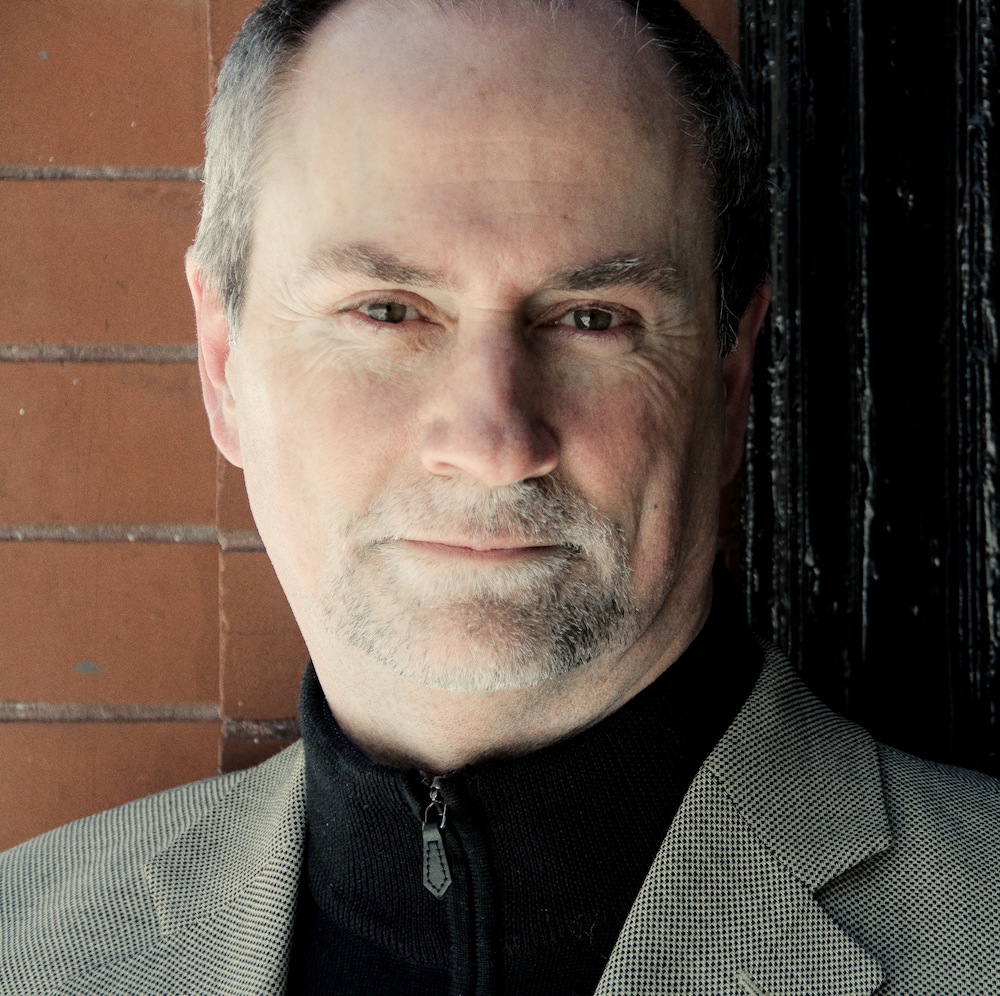 "Her writing was a revelation."
"Her writing was a revelation." Six authors reflect on what they're most thankful for this year.
Six authors reflect on what they're most thankful for this year.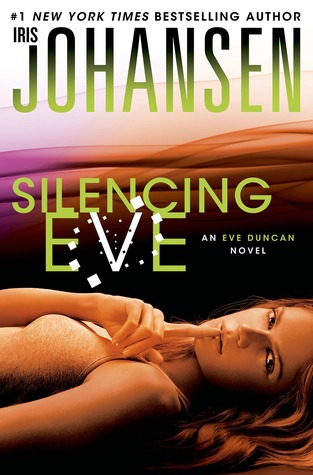 Silencing Eve, the final book in the trilogy, starts by giving readers a shock: Eve is dead.
Silencing Eve, the final book in the trilogy, starts by giving readers a shock: Eve is dead.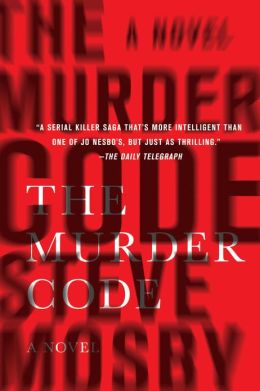 A police procedural and an intense psychological portrait of the troubled man on the case.
A police procedural and an intense psychological portrait of the troubled man on the case.
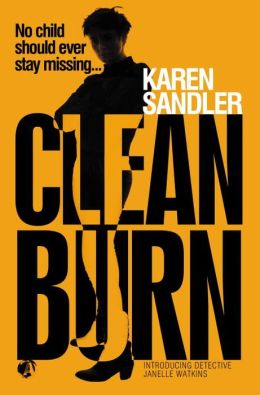 A dark, extraordinary story of a thoughtful new PI on the trail of a serial arsonist in San Francisco.
A dark, extraordinary story of a thoughtful new PI on the trail of a serial arsonist in San Francisco.
